260 Interesting Math Topics for Essays & Research Papers
Mathematics is the science of numbers and shapes. Writing about it can give you a fresh perspective and help to clarify difficult concepts. You can even use mathematical writing as a tool in problem-solving.
Our specialists will write a custom essay specially for you!
In this article, you will find plenty of interesting math topics. Besides, you will learn about branches of mathematics that you can choose from. And if the thought of letters and numbers makes your head swim, try our custom writing service . Our professionals will craft a paper for you in no time!
And now, let’s proceed to math essay topics and tips.

🔝 Top 10 Interesting Math Topics
✅ branches of mathematics, ✨ fun math topics.
- 🏫 Math Topics for High School
- 🎓 College Math Topics
- 🤔 Advanced Math
- 📚 Math Research
- ✏️ Math Education
- 💵 Business Math
🔍 References
- Number theory in everyday life.
- Logicist definitions of mathematics.
- Multivariable vs. vector calculus.
- 4 conditions of functional analysis.
- Random variable in probability theory.
- How is math used in cryptography?
- The purpose of homological algebra.
- Concave vs. convex in geometry.
- The philosophical problem of foundations.
- Is numerical analysis useful for machine learning?
What exactly is mathematics ? First and foremost, it is very old. Ancient Greeks and Persians were already utilizing mathematical tools. Nowadays, we consider it an interdisciplinary language.
Biologists, linguists, and sociologists alike use math in their work. And not only that, we all deal with it in our daily lives. For instance, it manifests in the measurement of time. We often need it to calculate how much our groceries cost and how much paint we need to buy to cover a wall.

Simply put, mathematics is a universal instrument for problem-solving. We can divide pure math into three branches: geometry, arithmetic, and algebra. Let’s take a closer look:
Just in 1 hour! We will write you a plagiarism-free paper in hardly more than 1 hour
- Geometry By studying geometry, we try to comprehend our physical surroundings. Geometric shapes can be simple, like a triangle. Or, they can form complicated figures, like a rhombicosidodecahedron.
- Arithmetic Arithmetic deals with numbers and simple operations: subtraction, addition, division, and multiplication.
- Algebra Algebra is used when the exact numbers are unclear. Instead, they are replaced with letters. Businesses often need algebra to predict their sales.
It’s true that most high school students don’t like math. However, that doesn’t mean it can’t be a fun and compelling subject. In the following section, you will find plenty of enthralling mathematical topics for your paper.
If you’re struggling to start working on your essay, we have some fun and cool math topics to offer. They will definitely engage you and make the writing process enjoyable. Besides, fun math topics can show everyone that even math can be entertaining or even a bit silly.
- The link between mathematics and art – analyzing the Golden Ratio in Renaissance-era paintings.
- An evaluation of Georg Cantor’s set theory.
- The best approaches to learning math facts and developing number sense.
- Different approaches to probability as explored through analyzing card tricks.
- Chess and checkers – the use of mathematics in recreational activities.
- The five types of math used in computer science .
- Real-life applications of the Pythagorean Theorem .
- A study of the different theories of mathematical logic .
- The use of game theory in social science.
- Mathematical definitions of infinity and how to measure it.
- What is the logic behind unsolvable math problems?
- An explanation of mean, mode, and median using classroom math grades.
- The properties and geometry of a Möbius strip.
- Using truth tables to present the logical validity of a propositional expression.
- The relationship between Pascal’s Triangle and The Binomial Theorem.
- The use of different number types: the history.
- The application of differential geometry in modern architecture.
- A mathematical approach to the solution of a Rubik’s Cube.
- Comparison of predictive and prescriptive statistical analyses.
- Explaining the iterations of the Koch snowflake.
- The importance of limits in calculus.
- Hexagons as the most balanced shape in the universe.
- The emergence of patterns in chaos theory.
- What were Euclid’s contributions to the field of mathematics?
- The difference between universal algebra and abstract algebra.
🏫 Math Essay Topics for High School
When writing a math paper, you want to demonstrate that you understand a concept. It can be helpful if you need to prepare for an exam. Choose a topic from this section and decide what you want to discuss.
- Explain what we need Pythagoras’ theorem for.
- What is a hyperbola?
- Describe the difference between algebra and arithmetic.
- When is it unnecessary to use a calculator ?
- Find a connection between math and the arts.
- How do you solve a linear equation?
- Discuss how to determine the probability of rolling two dice.
- Is there a link between philosophy and math?
- What types of math do you use in your everyday life?
- What is the numerical data?
- Explain how to use the binomial theorem.
- What is the distributive property of multiplication?
- Discuss the major concepts in ancient Egyptian mathematics .
- Why do so many students dislike math?
- Should math be required in school?
- How do you do an equivalent transformation?
- Why do we need imaginary numbers?
- How can you calculate the slope of a curve?
- What is the difference between sine, cosine, and tangent?
- How do you define the cross product of two vectors?
- What do we use differential equations for?
- Investigate how to calculate the mean value.
- Define linear growth.
- Give examples of different number types.
- How can you solve a matrix?
🎓 College Math Topics for a Paper
Sometimes you need more than just formulas to explain a complex idea. That’s why knowing how to express yourself is crucial. It is especially true for college-level mathematics. Consider the following ideas for your next research project:
- What do we need n-dimensional spaces for?
- Explain how card counting works.
- Discuss the difference between a discrete and a continuous probability distribution .
- How does encryption work?
- Describe extremal problems in discrete geometry.
- What can make a math problem unsolvable?
- Examine the topology of a Möbius strip.

- What is K-theory?
- Discuss the core problems of computational geometry.
- Explain the use of set theory .
- What do we need Boolean functions for?
- Describe the main topological concepts in modern mathematics.
- Investigate the properties of a rotation matrix.
- Analyze the practical applications of game theory.
- How can you solve a Rubik’s cube mathematically?
- Explain the math behind the Koch snowflake.
- Describe the paradox of Gabriel’s Horn.
- How do fractals form?
- Find a way to solve Sudoku using math.
- Why is the Riemann hypothesis still unsolved?
- Discuss the Millennium Prize Problems.
- How can you divide complex numbers?
- Analyze the degrees in polynomial functions.
- What are the most important concepts in number theory?
- Compare the different types of statistical methods .
🤔 Advanced Topics in Math to Write a Paper on
Once you have passed the trials of basic math, you can move on to the advanced section. This area includes topology, combinatorics, logic, and computational mathematics. Check out the list below for enticing topics to write about:
Receive a plagiarism-free paper tailored to your instructions. Cut 20% off your first order!
- What is an abelian group?
- Explain the orbit-stabilizer theorem.
- Discuss what makes the Burnside problem influential.
- What fundamental properties do holomorphic functions have?
- How does Cauchy’s integral theorem lead to Cauchy’s integral formula?
- How do the two Picard theorems relate to each other?
- When is a trigonometric series called a Fourier series?
- Give an example of an algorithm used for machine learning .
- Compare the different types of knapsack problems.
- What is the minimum overlap problem?
- Describe the Bernoulli scheme.
- Give a formal definition of the Chinese restaurant process.
- Discuss the logistic map in relation to chaos .
- What do we need the Feigenbaum constants for?
- Define a difference equation.
- Explain the uses of the Fibonacci sequence.
- What is an oblivious transfer?
- Compare the Riemann and the Ruelle zeta functions.
- How can you use elementary embeddings in model theory?
- Analyze the problem with the wholeness axiom and Kunen’s inconsistency theorem.
- How is Lie algebra used in physics ?
- Define various cases of algebraic cycles.
- Why do we need étale cohomology groups to calculate algebraic curves?
- What does non-Euclidean geometry consist of?
- How can two lines be ultraparallel?
📚 Math Research Topics for a Paper
Choosing the right topic is crucial for a successful research paper in math. It should be hard enough to be compelling, but not exceeding your level of competence. If possible, stick to your area of knowledge. This way your task will become more manageable. Here are some ideas:
- Write about the history of calculus.
- Why are unsolved math problems significant?
- Find reasons for the gender gap in math students.
- What are the toughest mathematical questions asked today?
- Examine the notion of operator spaces.
- How can we design a train schedule for a whole country?
- What makes a number big?

- How can infinities have various sizes?
- What is the best mathematical strategy to win a game of Go?
- Analyze natural occurrences of random walks in biology.
- Explain what kind of mathematics was used in ancient Persia.
- Discuss how the Iwasawa theory relates to modular forms.
- What role do prime numbers play in encryption ?
- How did the study of mathematics evolve?
- Investigate the different Tower of Hanoi solutions.
- Research Napier’s bones. How can you use them?
- What is the best mathematical way to find someone who is lost in a maze?
- Examine the Traveling Salesman Problem. Can you find a new strategy?
- Describe how barcodes function.
- Study some real-life examples of chaos theory. How do you define them mathematically?
- Compare the impact of various ground-breaking mathematical equations .
- Research the Seven Bridges of Königsberg. Relate the problem to the city of your choice.
- Discuss Fisher’s fundamental theorem of natural selection.
- How does quantum computing work?
- Pick an unsolved math problem and say what makes it so difficult.
✏️ Math Education Research Topics
For many teachers, the hardest part is to keep the students interested. When it comes to math, it can be especially challenging. It’s crucial to make complicated concepts easy to understand. That’s why we need research on math education.
- Compare traditional methods of teaching math with unconventional ones.
- How can you improve mathematical education in the U.S.?
- Describe ways of encouraging girls to pursue careers in STEM fields.
- Should computer programming be taught in high school?
- Define the goals of mathematics education .
- Research how to make math more accessible to students with learning disabilities .
- At what age should children begin to practice simple equations?
- Investigate the effectiveness of gamification in algebra classes.
- What do students gain from taking part in mathematics competitions?
- What are the benefits of moving away from standardized testing ?
- Describe the causes of “ math anxiety .” How can you overcome it?
- Explain the social and political relevance of mathematics education.
- Define the most significant issues in public school math teaching.
- What is the best way to get children interested in geometry?
- How can students hone their mathematical thinking outside the classroom?
- Discuss the benefits of using technology in math class.
- In what way does culture influence your mathematical education?
- Explore the history of teaching algebra .
- Compare math education in various countries.

- How does dyscalculia affect a student’s daily life?
- Into which school subjects can math be integrated?
- Has a mathematics degree increased in value over the last few years?
- What are the disadvantages of the Common Core Standards ?
- What are the advantages of following an integrated curriculum in math?
- Discuss the benefits of Mathcamp.
🧮 Algebra Topics for a Paper
The elegance of algebra stems from its simplicity. It gives us the ability to express complex problems in short equations. The world was changed forever when Einstein wrote down the simple formula E=mc². Now, if your algebra seminar requires you to write a paper, look no further! Here are some brilliant prompts:
- Give an example of an induction proof.
- What are F-algebras used for?
- What are number problems?
- Show the importance of abstract algebraic thinking .
- Investigate the peculiarities of Fermat’s last theorem.
- What are the essentials of Boolean algebra?
- Explore the relationship between algebra and geometry.
- Compare the differences between commutative and noncommutative algebra.
- Why is Brun’s constant relevant?
- How do you factor quadratics?
- Explain Descartes’ Rule of Signs.
- What is the quadratic formula?
- Compare the four types of sequences and define them.
- Explain how partial fractions work.
- What are logarithms used for?
- Describe the Gaussian elimination.
- What does Cramer’s rule state?
- Explore the difference between eigenvectors and eigenvalues.
- Analyze the Gram-Schmidt process in two dimensions.
- Explain what is meant by “range” and “domain” in algebra.
- What can you do with determinants?
- Learn about the origin of the distance formula.
- Find the best way to solve math word problems.
- Compare the relationships between different systems of equations.
- Explore how the Rubik’s cube relates to group theory .
📏 Geometry Topics for a Research Paper
Shapes and space are the two staples of geometry. Since its appearance in ancient times, it has evolved into a major field of study. Geometry’s most recent addition, topology, explores what happens to an object if you stretch, shrink, and fold it. Things can get pretty crazy from here! The following list contains 25 interesting geometry topics:
- What are the Archimedean solids?
- Find real-life uses for a rhombicosidodecahedron.
- What is studied in projective geometry?
- Compare the most common types of transformations.
- Explain how acute square triangulation works.
- Discuss the Borromean ring configuration.
- Investigate the solutions to Buffon’s needle problem.
- What is unique about right triangles?

- Describe the notion of Dirac manifolds.
- Compare the various relationships between lines.
- What is the Klein bottle?
- How does geometry translate into other disciplines, such as chemistry and physics?
- Explore Riemannian manifolds in Euclidean space.
- How can you prove the angle bisector theorem?
- Do a research on M.C. Escher’s use of geometry.
- Find applications for the golden ratio .
- Describe the importance of circles.
- Investigate what the ancient Greeks knew about geometry.
- What does congruency mean?
- Study the uses of Euler’s formula.
- How do CT scans relate to geometry?
- Why do we need n-dimensional vectors?
- How can you solve Heesch’s problem?
- What are hypercubes?
- Analyze the use of geometry in Picasso’s paintings.
➗ Calculus Topics to Write a Paper on
You can describe calculus as a more complicated algebra. It’s a study of change over time that provides useful insights into everyday problems. Applied calculus is required in a variety of fields such as sociology, engineering, or business. Consult this list of compelling topics on a calculus paper:
Get an originally-written paper according to your instructions!
- What are the differences between trigonometry, algebra, and calculus?
- Explain the concept of limits.
- Describe the standard formulas needed for derivatives.
- How can you find critical points in a graph?
- Evaluate the application of L’Hôpital’s rule.
- How do you define the area between curves?
- What is the foundation of calculus?

- How does multivariate calculus work?
- Discuss the use of Stokes’ theorem.
- What does Leibniz’s integral rule state?
- What is the Itô stochastic integral?
- Explore the influence of nonstandard analysis on probability theory.
- Research the origins of calculus.
- Who was Maria Gaetana Agnesi?
- Define a continuous function.
- What is the fundamental theorem of calculus?
- How do you calculate the Taylor series of a function?
- Discuss the ways to resolve Runge’s phenomenon.
- Explain the extreme value theorem.
- What do we need predicate calculus for?
- What are linear approximations?
- When does an integral become improper?
- Describe the Ratio and Root Tests.
- How does the method of rings work?
- Where do we apply calculus in real-life situations?
💵 Business Math Topics to Write About
You don’t have to own a company to appreciate business math. Its topics range from credits and loans to insurance, taxes, and investment. Even if you’re not a mathematician, you can use it to handle your finances. Sounds interesting? Then have a look at the following list:
- What are the essential skills needed for business math?
- How do you calculate interest rates?
- Compare business and consumer math.
- What is a discount factor?
- How do you know that an investment is reasonable?
- When does it make sense to pay a loan with another loan?
- Find useful financing techniques that everyone can use.
- How does critical path analysis work?
- Explain how loans work.
- Which areas of work utilize operations research?
- How do businesses use statistics?
- What is the economic lot scheduling problem?
- Compare the uses of different chart types.
- What causes a stock market crash?
- How can you calculate the net present value?
- Explore the history of revenue management .
- When do you use multi-period models?
- Explain the consequences of depreciation.
- Are annuities a good investment?
- Would the U.S. financially benefit from discontinuing the penny?
- What caused the United States housing crash in 2008?
- How do you calculate sales tax?
- Describe the notions of markups and markdowns.
- Investigate the math behind debt amortization.
- What is the difference between a loan and a mortgage?
With all these ideas, you are perfectly equipped for your next math paper. Good luck!
- What Is Calculus?: Southern State Community College
- What Is Mathematics?: Tennessee Tech University
- What Is Geometry?: University of Waterloo
- What Is Algebra?: BBC
- Ten Simple Rules for Mathematical Writing: Ohio State University
- Practical Algebra Lessons: Purplemath
- Topics in Geometry: Massachusetts Institute of Technology
- The Geometry Junkyard: All Topics: Donald Bren School of Information and Computer Sciences
- Calculus I: Lamar University
- Business Math for Financial Management: The Balance Small Business
- What Is Mathematics: Life Science
- What Is Mathematics Education?: University of California, Berkeley
- Share to Facebook
- Share to Twitter
- Share to LinkedIn
- Share to email

Cause and effect essays examine how an event happened and what consequences it had. Gaining weight after eating lots of fast food is an example of a cause-and-effect relationship. Possible topics cover a variety of subjects ranging from mental health to history and politics. This article gives you an outline...

An analysis essay aims to break down the subject in order to understand it. You can choose to analyze a text, a process, or an idea. This article will help you write a great essay! Selecting an interesting topic makes writing a lot easier. We’ve prepared a list of excellent...

Everybody knows that being healthy requires effort. We should exercise regularly and maintain a balanced diet. However, the reward is worth it. A healthy lifestyle prevents chronic illnesses and leads to better body performance. Besides, if you improve your physical well-being, your mental health will strengthen as well! In this...

Environment affects us all, whether we want it or not. Political leaders and students alike discuss ways to tackle environmental topics & issues. Some might argue about the role humans play in all this. The fact remains that our environment is a delicate matter. That’s why we must educate ourselves...

Our code of ethics is derived from what we think is right or wrong. On top of that, we have to agree to the moral standards established by the society we live in. Conventional norms generally label theft, murder, or harassment as bad. However, there are many influences that impact...

A definition explains the meaning of a term or a concept. In a dictionary, you’ll find a definition in a single sentence. A definition paper, however, encompasses several paragraphs. Such an essay, amongst other things, can include personal experience and examples. To write a successful definition paper, you need to...

As simple as it is, the purpose of the descriptive essay is to explain or portray its subject. It can focus on any topic or issue you want to write about. Be sure that any middle school, high school, or college student can manage this type of creative writing assignment!...

Rhetorical analysis essay focuses on assessing the method used for delivering a message. This assignment isn’t about giving an opinion on the topic. The purpose is to analyze how the author presents the argument and whether or not they succeeded. Keep reading to find out more strategies and prompts for...

A narrative essay tells a story about a series of events. At the core of this kind of essay can be a personal experience or a fictional plot. Any story can be a basis for a narrative essay! Narratives can look similar to descriptions. Still, they are different. A descriptive...

Similar to the instructions in a recipe book, process essays convey information in a step-by-step format. In this type of paper, you follow a structured chronological process. You can also call it a how-to essay. A closely related type is a process analysis essay. Here you have to carefully consider...

In a classification essay, you divide the subject into categories. To create these categories, you single out certain attributes of things. You can classify them according to their characteristics, themes, or traits. Sounds complicated? Be sure that any high school or college student can manage this type of essay!

Throughout your high school years, you are likely to write many evaluative papers. In an evaluation essay you aim is to justify your point of view through evidence.
I need a writer on algebra. I am a PhD student.Can i be helped by anybody/expert?

Hello! Our experts will help you with any task
Please I want to do my MPhil research on algebra if you can help me
Hello! Our experts https://custom-writing.org/ will help you with any task!
shall your university help me on research in mathematics ?
Kindly contact our experts via the contact form and they will assist you with your task
how I get the full pdf of those tittles
Print as pdf.
404 Not found
404 Not found
404 Not found
8. Appendices
In the appendices you should include any data or material that supported your research but that was too long to include in the body of your paper. Materials in an appendix should be referenced at some point in the body of the report.
Some examples:
• If you wrote a computer program to generate more data than you could produce by hand, you should include the code and some sample output.
• If you collected statistical data using a survey, include a copy of the survey.
• If you have lengthy tables of numbers that you do not want to include in the body of your report, you can put them in an appendix.
Sample Write-Up
Seating unfriendly customers, a combinatorics problem.
By Lisa Honeyman February 12, 2002
The Problem
In a certain coffee shop, the customers are grouchy in the early morning and none of them wishes to sit next to another at the counter.
1. Suppose there are ten seats at the counter. How many different ways can three early morning customers sit at the counter so that no one sits next to anyone else?
2. What if there are n seats at the counter?
3. What if we change the number of customers?
4. What if, instead of a counter, there was a round table and people refused to sit next to each other?
Assumptions
I am assuming that the order in which the people sit matters. So, if three people occupy the first, third and fifth seats, there are actually 6 (3!) different ways they can do this. I will explain more thoroughly in the body of my report.
Body of the Report
At first there are 10 seats available for the 3 people to sit in. But once the first person sits down, that limits where the second person can sit. Not only can’t he sit in the now-occupied seat, he can’t sit next to it either. What confused me at first was that if the first person sat at one of the ends, then there were 8 seats left for the second person to chose from. But if the 1 st person sat somewhere else, there were only 7 remaining seats available for the second person. I decided to look for patterns. By starting with a smaller number of seats, I was able to count the possibilities more easily. I was hoping to find a pattern so I could predict how many ways the 10 people could sit without actually trying to count them all. I realized that the smallest number of seats I could have would be 5. Anything less wouldn’t work because people would have to sit next to each other. So, I started with 5 seats. I called the customers A, B, and C.
With 5 seats there is only one configuration that works.
As I said in my assumptions section, I thought that the order in which the people sit is important. Maybe one person prefers to sit near the coffee maker or by the door. These would be different, so I decided to take into account the different possible ways these 3 people could occupy the 3 seats shown above. I know that ABC can be arranged in 3! = 6 ways. (ABC, ACB, BAC, BCA, CAB, CBA). So there are 6 ways to arrange 3 people in 5 seats with spaces between them. But, there is only one configuration of seats that can be used. (The 1 st , 3 rd , and 5 th ).
Next, I tried 6 seats. I used a systematic approach to show that there are 4 possible arrangements of seats. This is how my systematic approach works:
Assign person A to the 1 st seat. Put person B in the 3 rd seat, because he can’t sit next to person A. Now, person C can sit in either the 5 th or 6 th positions. (see the top two rows in the chart, below.) Next suppose that person B sits in the 4 th seat (the next possible one to the right.) That leaves only the 6 th seat free for person C. (see row 3, below.) These are all the possible ways for the people to sit if the 1 st seat is used. Now put person A in the 2 nd seat and person B in the 4 th . There is only one place where person C can sit, and that’s in the 6 th position. (see row 4, below.) There are no other ways to seat the three people if person A sits in the 2 nd seat. So, now we try putting person A in the 3 rd seat. If we do that, there are only 4 seats that can be used, but we know that we need at least 5, so there are no more possibilities.
Possible seats 3 people could occupy if there are 6 seats
Once again, the order the people sit in could be ABC, BAC, etc. so there are 4 * 6 = 24 ways for the 3 customers to sit in 6 seats with spaces between them.
I continued doing this, counting how many different groups of seats could be occupied by the three people using the systematic method I explained. Then I multiplied that number by 6 to account for the possible permutations of people in those seats. I created the following table of what I found.
Next I tried to come up with a formula. I decided to look for a formula using combinations or permutations. Since we are looking at 3 people, I decided to start by seeing what numbers I would get if I used n C 3 and n P 3 .
3 C 3 = 1 4 C 3 = 4 5 C 3 = 10 6 C 3 = 20
3 P 3 = 6 4 P 3 = 24 5 P 3 = 60 6 P 3 = 120
Surprisingly enough, these numbers matched the numbers I found in my table. However, the n in n P r and n C r seemed to be two less than the total # of seats I was investigating.
Conjecture 1:
Given n seats at a lunch counter, there are n -2 C 3 ways to select the three seats in which the customers will sit such that no customer sits next to another one. There are n -2 P 3 ways to seat the 3 customers in such a way than none sits next to another.
After I found a pattern, I tried to figure out why n -2 C 3 works. (If the formula worked when order didn’t matter it could be easily extended to when the order did, but the numbers are smaller and easier to work with when looking at combinations rather than permutations.)
In order to prove Conjecture 1 convincingly, I need to show two things:
(1) Each n – 2 seat choice leads to a legal n seat configuration.
(2) Each n seat choice resulted from a unique n – 2 seat configuration.
To prove these two things I will show
And then conclude that these two procedures are both functions and therefore 1—1.
Claim (1): Each ( n – 2) -seat choice leads to a legal n seat configuration.
Suppose there were only n – 2 seats to begin with. First we pick three of them in which to put people, without regard to whether or not they sit next to each other. But, in order to guarantee that they don’t end up next to another person, we introduce an empty chair to the right of each of the first two people. It would look like this:
We don’t need a third “new” seat because once the person who is farthest to the right sits down, there are no more customers to seat. So, we started with n – 2 chairs but added two for a total of n chairs. Anyone entering the restaurant after this procedure had been completed wouldn’t know that there had been fewer chairs before these people arrived and would just see three customers sitting at a counter with n chairs. This procedure guarantees that two people will not end up next to each other. Thus, each ( n – 2)-seat choice leads to a unique, legal n seat configuration.
Therefore, positions s 1 ' s 2 ', and s 3 ' are all separated by at least one vacant seat.
This is a function that maps each combination of 3 seats selected from n – 2 seats onto a unique arrangement of n seats with 3 separated customers. Therefore, it is invertible.
Claim (2): Each 10-seat choice has a unique 8-seat configuration.
Given a legal 10-seat configuration, each of the two left-most diners must have an open seat to his/her right. Remove it and you get a unique 8-seat arrangement. If, in the 10-seat setting, we have q 1 > q 2 , q 3 ; q 3 – 1 > q 2 , and q 2 – 1 > q 1 , then the 8 seat positions are q 1 ' = q 2 , q 2 ' = q 2 – 1, and q 3 ' = q 3 – 2. Combining these equations with the conditions we have
q 2 ' = q 2 – 1 which implies q 2 ' > q 1 = q 1 '
q 3 ' = q 3 – 2 which implies q 3 ' > q 2 – 1 = q 2 '
Since q 3 ' > q 2 ' > q 1 ', these seats are distinct. If the diners are seated in locations q 1 , q 2 , and q 3 (where q 3 – 1 > q 2 and q 2 – 1 > q 1 ) and we remove the two seats to the right of q 1 and q 2 , then we can see that the diners came from q 1 , q 2 – 1, and q 3 – 2. This is a function that maps a legal 10-seat configuration to a unique 8-seat configuration.
The size of a set can be abbreviated s ( ). I will use the abbreviation S to stand for n separated seats and N to stand for the n – 2 non-separated seats.
therefore s ( N ) = s ( S ).
Because the sets are the same size, these functions are 1—1.
Using the technique of taking away and adding empty chairs, I can extend the problem to include any number of customers. For example, if there were 4 customers and 10 seats there would be 7 C 4 = 35 different combinations of chairs to use and 7 P 4 = 840 ways for the customers to sit (including the fact that order matters). You can imagine that three of the ten seats would be introduced by three of the customers. So, there would only be 7 to start with.
In general, given n seats and c customers, we remove c- 1 chairs and select the seats for the c customers. This leads to the formula n -( c -1) C c = n - c +1 C c for the number of arrangements.
Once the number of combinations of seats is found, it is necessary to multiply by c ! to find the number of permutations. Looking at the situation of 3 customers and using a little algebraic manipulation, we get the n P 3 formula shown below.
This same algebraic manipulation works if you have c people rather than 3, resulting in n - c +1 P c
Answers to Questions
- With 10 seats there are 8 P 3 = 336 ways to seat the 3 people.
- My formula for n seats and 3 customers is: n -2 P 3 .
- My general formula for n seats and c customers, is: n -( c -1) P c = n - c +1 P c
_________________________________________________________________ _
After I finished looking at this question as it applied to people sitting in a row of chairs at a counter, I considered the last question, which asked would happen if there were a round table with people sitting, as before, always with at least one chair between them.
I went back to my original idea about each person dragging in an extra chair that she places to her right, barring anyone else from sitting there. There is no end seat, so even the last person needs to bring an extra chair because he might sit to the left of someone who has already been seated. So, if there were 3 people there would be 7 seats for them to choose from and 3 extra chairs that no one would be allowed to sit in. By this reasoning, there would be 7 C 3 = 35 possible configurations of chairs to choose and 7 P 3 = 840 ways for 3 unfriendly people to sit at a round table.
Conjecture 2: Given 3 customers and n seats there are n -3 C 3 possible groups of 3 chairs which can be used to seat these customers around a circular table in such a way that no one sits next to anyone else.
My first attempt at a proof: To test this conjecture I started by listing the first few numbers generated by my formula:
When n = 6 6-3 C 3 = 3 C 3 = 1
When n = 7 7-3 C 3 = 4 C 3 = 4
When n = 8 8-3 C 3 = 5 C 3 = 10
When n = 9 9-3 C 3 = 6 C 3 = 20
Then I started to systematically count the first few numbers of groups of possible seats. I got the numbers shown in the following table. The numbers do not agree, so something is wrong — probably my conjecture!
I looked at a circular table with 8 people and tried to figure out the reason this formula doesn’t work. If we remove 3 seats (leaving 5) there are 10 ways to select 3 of the 5 remaining chairs. ( 5 C 3 ).
The circular table at the left in the figure below shows the n – 3 (in this case 5) possible chairs from which 3 will be randomly chosen. The arrows point to where the person who selects that chair could end up. For example, if chair A is selected, that person will definitely end up in seat #1 at the table with 8 seats. If chair B is selected but chair A is not, then seat 2 will end up occupied. However, if chair A and B are selected, then the person who chose chair B will end up in seat 3 . The arrows show all the possible seats in which a person who chose a particular chair could end. Notice that it is impossible for seat #8 to be occupied. This is why the formula 5 C 3 doesn’t work. It does not allow all seats at the table of 8 to be chosen.
The difference is that in the row-of-chairs-at-a-counter problem there is a definite “starting point” and “ending point.” The first chair can be identified as the one farthest to the left, and the last one as the one farthest to the right. These seats are unique because the “starting point” has no seat to the left of it and the “ending point” has no seat to its right. In a circle, it is not so easy.
Using finite differences I was able to find a formula that generates the correct numbers:
Proof: We need to establish a “starting point.” This could be any of the n seats. So, we select one and seat person A in that seat. Person B cannot sit on this person’s left (as he faces the table), so we must eliminate that as a possibility. Also, remove any 2 other chairs, leaving ( n – 4) possible seats where the second person can sit. Select another seat and put person B in it. Now, select any other seat from the ( n – 5) remaining seats and put person C in that. Finally, take the two seats that were previously removed and put one to the left of B and one to the left of C.
The following diagram should help make this procedure clear.
In a manner similar to the method I used in the row-of-chairs-at-a-counter problem, this could be proven more rigorously.
An Idea for Further Research:
Consider a grid of chairs in a classroom and a group of 3 very smelly people. No one wants to sit adjacent to anyone else. (There would be 9 empty seats around each person.) Suppose there are 16 chairs in a room with 4 rows and 4 columns. How many different ways could 3 people sit? What if there was a room with n rows and n columns? What if it had n rows and m columns?
References:
Abrams, Joshua. Education Development Center, Newton, MA. December 2001 - February 2002. Conversations with my mathematics mentor.
Brown, Richard G. 1994. Advanced Mathematics . Evanston, Illinois. McDougal Littell Inc. pp. 578-591
The Oral Presentation
Giving an oral presentation about your mathematics research can be very exciting! You have the opportunity to share what you have learned, answer questions about your project, and engage others in the topic you have been studying. After you finish doing your mathematics research, you may have the opportunity to present your work to a group of people such as your classmates, judges at a science fair or other type of contest, or educators at a conference. With some advance preparation, you can give a thoughtful, engaging talk that will leave your audience informed and excited about what you have done.
Planning for Your Oral Presentation
In most situations, you will have a time limit of between 10 and 30 minutes in which to give your presentation. Based upon that limit, you must decide what to include in your talk. Come up with some good examples that will keep your audience engaged. Think about what vocabulary, explanations, and proofs are really necessary in order for people to understand your work. It is important to keep the information as simple as possible while accurately representing what you’ve done. It can be difficult for people to understand a lot of technical language or to follow a long proof during a talk. As you begin to plan, you may find it helpful to create an outline of the points you want to include. Then you can decide how best to make those points clear to your audience.
You must also consider who your audience is and where the presentation will take place. If you are going to give your presentation to a single judge while standing next to your project display, your presentation will be considerably different than if you are going to speak from the stage in an auditorium full of people! Consider the background of your audience as well. Is this a group of people that knows something about your topic area? Or, do you need to start with some very basic information in order for people to understand your work? If you can tailor your presentation to your audience, it will be much more satisfying for them and for you.
No matter where you are presenting your speech and for whom, the structure of your presentation is very important. There is an old bit of advice about public speaking that goes something like this: “Tell em what you’re gonna tell ’em. Tell ’em. Then tell ’em what you told ’em.” If you use this advice, your audience will find it very easy to follow your presentation. Get the attention of the audience and tell them what you are going to talk about, explain your research, and then following it up with a re-cap in the conclusion.
Writing Your Introduction
Your introduction sets the stage for your entire presentation. The first 30 seconds of your speech will either capture the attention of your audience or let them know that a short nap is in order. You want to capture their attention. There are many different ways to start your speech. Some people like to tell a joke, some quote famous people, and others tell stories.
Here are a few examples of different types of openers.
You can use a quote from a famous person that is engaging and relevant to your topic. For example:
• Benjamin Disraeli once said, “There are three kinds of lies: lies, damn lies, and statistics.” Even though I am going to show you some statistics this morning, I promise I am not going to lie to you! Instead, . . .
• The famous mathematician, Paul Erdös, said, “A Mathematician is a machine for turning coffee into theorems.” Today I’m here to show you a great theorem that I discovered and proved during my mathematics research experience. And yes, I did drink a lot of coffee during the project!
• According to Stephen Hawking, “Equations are just the boring part of mathematics.” With all due respect to Dr. Hawking, I am here to convince you that he is wrong. Today I’m going to show you one equation that is not boring at all!
Some people like to tell a short story that leads into their discussion.
“Last summer I worked at a diner during the breakfast shift. There were 3 regular customers who came in between 6:00 and 6:15 every morning. If I tell you that you didn’t want to talk to these folks before they’ve had their first cup of coffee, you’ll get the idea of what they were like. In fact, these people never sat next to each other. That’s how grouchy they were! Well, their anti-social behavior led me to wonder, how many different ways could these three grouchy customers sit at the breakfast counter without sitting next to each other? Amazingly enough, my summer job serving coffee and eggs to grouchy folks in Boston led me to an interesting combinatorics problem that I am going to talk to you about today.”
A short joke related to your topic can be an engaging way to start your speech.
It has been said that there are three kinds of mathematicians: those who can count and those who can’t.
All joking aside, my mathematics research project involves counting. I have spent the past 8 weeks working on a combinatorics problem.. . .
To find quotes to use in introductions and conclusions try: http://www.quotationspage.com/
To find some mathematical quotes, consult the Mathematical Quotation Server: http://math.furman.edu/~mwoodard/mquot.html
To find some mathematical jokes, you can look at the “Profession Jokes” web site: http://www.geocities.com/CapeCanaveral/4661/projoke22.htm
There is a collection of math jokes compiled by the Canadian Mathematical Society at http://camel.math.ca/Recreation/
After you have the attention of your audience, you must introduce your research more formally. You might start with a statement of the problem that you investigated and what lead you to choose that topic. Then you might say something like this,
“Today I will demonstrate how I came to the conclusion that there are n ( n – 4)( n – 5) ways to seat 3 people at a circular table with n seats in such a way that no two people sit next to each other. In order to do this I will first explain how I came up with this formula and then I will show you how I proved it works. Finally, I will extend this result to tables with more than 3 people sitting at them.”
By providing a brief outline of your talk at the beginning and reminding people where you are in the speech while you are talking, you will be more effective in keeping the attention of your audience. It will also make it much easier for you to remember where you are in your speech as you are giving it.
The Middle of Your Presentation
Because you only have a limited amount of time to present your work, you need to plan carefully. Decide what is most important about your project and what you want people to know when you are finished. Outline the steps that people need to follow in order to understand your research and then think carefully about how you will lead them through those steps. It may help to write your entire speech out in advance. Even if you choose not to memorize it and present it word for word, the act of writing will help you clarify your ideas. Some speakers like to display an outline of their talk throughout their entire presentation. That way, the audience always knows where they are in the presentation and the speaker can glance at it to remind him or herself what comes next.
An oral presentation must be structured differently than a written one because people can’t go back and “re-read” a complicated section when they are at a talk. You have to be extremely clear so that they can understand what you are saying the first time you say it. There is an acronym that some presenters like to remember as they prepare a talk: “KISS.” It means, “Keep It Simple, Student.” It may sound silly, but it is good advice. Keep your sentences short and try not to use too many complicated words. If you need to use technical language, be sure to define it carefully. If you feel that it is important to present a proof, remember that you need to keep things easy to understand. Rather than going through every step, discuss the main points and the conclusion. If you like, you can write out the entire proof and include it in a handout so that folks who are interested in the details can look at them later. Give lots of examples! Not only will examples make your talk more interesting, but they will also make it much easier for people to follow what you are saying.
It is useful to remember that when people have something to look at, it helps to hold their attention and makes it easier for them to understand what you are saying. Therefore, use lots of graphs and other visual materials to support your work. You can do this using posters, overhead transparencies, models, or anything else that helps make your explanations clear.
Using Materials
As you plan for your presentation, consider what equipment or other materials you might want use. Find out what is available in advance so you don’t spend valuable time creating materials that you will not be able to use. Common equipment used in talks include an over-head projector, VCR, computer, or graphing calculator. Be sure you know how to operate any equipment that you plan to use. On the day of your talk, make sure everything is ready to go (software loaded, tape at the right starting point etc.) so that you don’t have “technical difficulties.”
Visual aides can be very useful in a presentation. (See Displaying Your Results for details about poster design.) If you are going to introduce new vocabulary, consider making a poster with the words and their meanings to display throughout your talk. If people forget what a term means while you are speaking, they can refer to the poster you have provided. (You could also write the words and meanings on a black/white board in advance.) If there are important equations that you would like to show, you can present them on an overhead transparency that you prepare prior to the talk. Minimize the amount you write on the board or on an overhead transparency during your presentation. It is not very engaging for the audience to sit watching while you write things down. Prepare all equations and materials in advance. If you don’t want to reveal all of what you have written on your transparency at once, you can cover up sections of your overhead with a piece of paper and slide it down the page as you move along in your talk. If you decide to use overhead transparencies, be sure to make the lettering large enough for your audience to read. It also helps to limit how much you put on your transparencies so they are not cluttered. Lastly, note that you can only project approximately half of a standard 8.5" by 11" page at any one time, so limit your information to displays of that size.
Presenters often create handouts to give to members of the audience. Handouts may include more information about the topic than the presenter has time to discuss, allowing listeners to learn more if they are interested. Handouts may also include exercises that you would like audience members to try, copies of complicated diagrams that you will display, and a list of resources where folks might find more information about your topic. Give your audience the handout before you begin to speak so you don’t have to stop in the middle of the talk to distribute it. In a handout you might include:
• A proof you would like to share, but you don’t have time to present entirely.
• Copies of important overhead transparencies that you use in your talk.
• Diagrams that you will display, but which may be too complicated for someone to copy down accurately.
• Resources that you think your audience members might find useful if they are interested in learning more about your topic.
The Conclusion
Ending your speech is also very important. Your conclusion should leave the audience feeling satisfied that the presentation was complete. One effective way to conclude a speech is to review what you presented and then to tie back to your introduction. If you used the Disraeli quote in your introduction, you might end by saying something like,
I hope that my presentation today has convinced you that . . . Statistical analysis backs up the claims that I have made, but more importantly, . . . . And that’s no lie!
Getting Ready
After you have written your speech and prepared your visuals, there is still work to be done.
- Prepare your notes on cards rather than full-size sheets of paper. Note cards will be less likely to block your face when you read from them. (They don’t flop around either.) Use a large font that is easy for you to read. Write notes to yourself on your notes. Remind yourself to smile or to look up. Mark when to show a particular slide, etc.
- Practice! Be sure you know your speech well enough that you can look up from your notes and make eye contact with your audience. Practice for other people and listen to their feedback.
- Time your speech in advance so that you are sure it is the right length. If necessary, cut or add some material and time yourself again until your speech meets the time requirements. Do not go over time!
- Anticipate questions and be sure you are prepared to answer them.
- Make a list of all materials that you will need so that you are sure you won’t forget anything.
- If you are planning to provide a handout, make a few extras.
- If you are going to write on a whiteboard or a blackboard, do it before starting your talk.
The Delivery
How you deliver your speech is almost as important as what you say. If you are enthusiastic about your presentation, it is far more likely that your audience will be engaged. Never apologize for yourself. If you start out by saying that your presentation isn’t very good, why would anyone want to listen to it? Everything about how you present yourself will contribute to how well your presentation is received. Dress professionally. And don’t forget to smile!
Here are a few tips about delivery that you might find helpful.
- Make direct eye contact with members of your audience. Pick a person and speak an entire phrase before shifting your gaze to another person. Don’t just “scan” the audience. Try not to look over their heads or at the floor. Be sure to look at all parts of the room at some point during the speech so everyone feels included.
- Speak loudly enough for people to hear and slowly enough for them to follow what you are saying.
- Do not read your speech directly from your note cards or your paper. Be sure you know your speech well enough to make eye contact with your audience. Similarly, don’t read your talk directly off of transparencies.
- Avoid using distracting or repetitive hand gestures. Be careful not to wave your manuscript around as you speak.
- Move around the front of the room if possible. On the other hand, don’t pace around so much that it becomes distracting. (If you are speaking at a podium, you may not be able to move.)
- Keep technical language to a minimum. Explain any new vocabulary carefully and provide a visual aide for people to use as a reference if necessary.
- Be careful to avoid repetitive space-fillers and slang such as “umm”, “er”, “you know”, etc. If you need to pause to collect your thoughts, it is okay just to be silent for a moment. (You should ask your practice audiences to monitor this habit and let you know how you did).
- Leave time at the end of your speech so that the audience can ask questions.
Displaying Your Results
When you create a visual display of your work, it is important to capture and retain the attention of your audience. Entice people to come over and look at your work. Once they are there, make them want to stay to learn about what you have to tell them. There are a number of different formats you may use in creating your visual display, but the underlying principle is always the same: your work should be neat, well-organized, informative, and easy to read.
It is unlikely that you will be able to present your entire project on a single poster or display board. So, you will need to decide which are the most important parts to include. Don’t try to cram too much onto the poster. If you do, it may look crowded and be hard to read! The display should summarize your most important points and conclusions and allow the reader to come away with a good understanding of what you have done.
A good display board will have a catchy title that is easy to read from a distance. Each section of your display should be easily identifiable. You can create posters such as this by using headings and also by separating parts visually. Titles and headings can be carefully hand-lettered or created using a computer. It is very important to include lots of examples on your display. It speeds up people’s understanding and makes your presentation much more effective. The use of diagrams, charts, and graphs also makes your presentation much more interesting to view. Every diagram or chart should be clearly labeled. If you include photographs or drawings, be sure to write captions that explain what the reader is looking at.
In order to make your presentation look more appealing, you will probably want to use some color. However, you must be careful that the color does not become distracting. Avoid florescent colors, and avoid using so many different colors that your display looks like a patch-work quilt. You want your presentation to be eye-catching, but you also want it to look professional.
People should be able to read your work easily, so use a reasonably large font for your text. (14 point is a recommended minimum.) Avoid writing in all-capitals because that is much harder to read than regular text. It is also a good idea to limit the number of different fonts you use on your display. Too many different fonts can make your poster look disorganized.
Notice how each section on the sample poster is defined by the use of a heading and how the various parts of the presentation are displayed on white rectangles. (Some of the rectangles are blank, but they would also have text or graphics on them in a real presentation.) Section titles were made with pale green paper mounted on red paper to create a boarder. Color was used in the diagrams to make them more eye-catching. This poster would be suitable for hanging on a bulletin board.
If you are planning to use a poster, such as this, as a visual aid during an oral presentation, you might consider backing your poster with foam-core board or corrugated cardboard. A strong board will not flop around while you are trying to show it to your audience. You can also stand a stiff board on an easel or the tray of a classroom blackboard or whiteboard so that your hands will be free during your talk. If you use a poster as a display during an oral presentation, you will need to make the text visible for your audience. You can create a hand-out or you can make overhead transparencies of the important parts. If you use overhead transparencies, be sure to use lettering that is large enough to be read at a distance when the text is projected.
If you are preparing your display for a science fair, you will probably want to use a presentation board that can be set up on a table. You can buy a pre-made presentation board at an office supply or art store or you can create one yourself using foam-core board. With a presentation board, you can often use the space created by the sides of the board by placing a copy of your report or other objects that you would like people to be able to look at there. In the illustration, a black trapezoid was cut out of foam-core board and placed on the table to make the entire display look more unified. Although the text is not shown in the various rectangles in this example, you will present your information in spaces such as these.
Don’t forget to put your name on your poster or display board. And, don’t forget to carefully proof-read your work. There should be no spelling, grammatical or typing mistakes on your project. If your display is not put together well, it may make people wonder about the quality of the work you did on the rest of your project.
For more information about creating posters for science fair competitions, see
http://school.discovery.com/sciencefaircentral/scifairstudio/handbook/display.html ,
http://www.siemens-foundation.org/science/poster_guidelines.htm ,
Robert Gerver’s book, Writing Math Research Papers , (published by Key Curriculum Press) has an excellent section about doing oral presentations and making posters, complete with many examples.
References Used
American Psychological Association . Electronic reference formats recommended by the American Psychological Association . (2000, August 22). Washington, DC: American Psychological Association. Retrieved October 6, 2000, from the World Wide Web: http://www.apastyle.org/elecsource.html
Bridgewater State College. (1998, August 5 ). APA Style: Sample Bibliographic Entries (4th ed) . Bridgewater, MA: Clement C. Maxwell Library. Retrieved December 20, 2001, from the World Wide Web: http://www.bridgew.edu/dept/maxwell/apa.htm
Crannell, Annalisa. (1994). A Guide to Writing in Mathematics Classes . Franklin & Marshall College. Retrieved January 2, 2002, from the World Wide Web: http://www.fandm.edu/Departments/Mathematics/writing_in_math/guide.html
Gerver, Robert. 1997. Writing Math Research Papers . Berkeley, CA: Key Curriculum Press.
Moncur, Michael. (1994-2002 ). The Quotations Page . Retrieved April 9, 2002, from the World Wide Web: http://www.quotationspage.com/
Public Speaking -- Be the Best You Can Be . (2002). Landover, Hills, MD: Advanced Public Speaking Institute. Retrieved April 9, 2002, from the World Wide Web: http://www.public-speaking.org/
Recreational Mathematics. (1988) Ottawa, Ontario, Canada: Canadian Mathematical Society. Retrieved April 9, 2002, from the World Wide Web: http://camel.math.ca/Recreation/
Shay, David. (1996). Profession Jokes — Mathematicians. Retrieved April 5, 2001, from the World Wide Web: http://www.geocities.com/CapeCanaveral/4661/projoke22.htm
Sieman’s Foundation. (2001). Judging Guidelines — Poster . Retrieved April 9, 2002, from the World Wide Web: http://www.siemens-foundation.org/science/poster_guidelines.htm ,
VanCleave, Janice. (1997). Science Fair Handbook. Discovery.com. Retrieved April 9, 2002, from the World Wide Web: http://school.discovery.com/sciencefaircentral/scifairstudio/handbook/display.html ,
Woodward, Mark. (2000) . The Mathematical Quotations Server . Furman University. Greenville, SC. Retrieved April 9, 2002, from the World Wide Web: http://math.furman.edu/~mwoodard/mquot.html
Making Mathematics Home | Mathematics Projects | Students | Teachers | Mentors | Parents | Hard Math Café |

- Math Careers
Search form
- MAA Centennial
- Spotlight: Archives of American Mathematics
- MAA Officers
- MAA to the Power of New
- Council and Committees
- MAA Code of Conduct
- Policy on Conflict of Interest
- Statement about Conflict of Interest
- Recording or Broadcasting of MAA Events
- Policy for Establishing Endowments and Funds
- Avoiding Implicit Bias
- Copyright Agreement
- Principal Investigator's Manual
- Planned Giving
- The Icosahedron Society
- Our Partners
- Advertise with MAA
- Employment Opportunities
- Staff Directory
- 2022 Impact Report
- In Memoriam
- Membership Categories
- Become a Member
- Membership Renewal
- MERCER Insurance
- MAA Member Directories
- New Member Benefits
- The American Mathematical Monthly
- Mathematics Magazine
- The College Mathematics Journal
- How to Cite
- Communications in Visual Mathematics
- About Convergence
- What's in Convergence?
- Convergence Articles
- Mathematical Treasures
- Portrait Gallery
- Paul R. Halmos Photograph Collection
- Other Images
- Critics Corner
- Problems from Another Time
- Conference Calendar
- Guidelines for Convergence Authors
- Math Horizons
- Submissions to MAA Periodicals
- Guide for Referees
- Scatterplot
- Math Values
- MAA Book Series
- MAA Press (an imprint of the AMS)
- MAA Library Recommendations
- Additional Sources for Math Book Reviews
- About MAA Reviews
- Mathematical Communication
- Information for Libraries
- Author Resources
- MAA MathFest
- Proposal and Abstract Deadlines
- MAA Policies
- Invited Paper Session Proposals
- Contributed Paper Session Proposals
- Panel, Poster, Town Hall, and Workshop Proposals
- Minicourse Proposals
- MAA Section Meetings
- Virtual Programming
- Joint Mathematics Meetings
- Calendar of Events
- MathFest Programs Archive
- MathFest Abstract Archive
- Historical Speakers
- Information for School Administrators
- Information for Students and Parents
- Registration
- Getting Started with the AMC
- AMC Policies
- AMC Administration Policies
- Important AMC Dates
- Competition Locations
- Invitational Competitions
- Putnam Competition Archive
- AMC International
- Curriculum Inspirations
- Sliffe Award
- MAA K-12 Benefits
- Mailing List Requests
- Statistics & Awards
- Submit an NSF Proposal with MAA
- MAA Distinguished Lecture Series
- Common Vision
- CUPM Curriculum Guide
- Instructional Practices Guide
- Möbius MAA Placement Test Suite
- META Math Webinar May 2020
- Progress through Calculus
- Survey and Reports
- "Camp" of Mathematical Queeries
- DMEG Awardees
- National Research Experience for Undergraduates Program (NREUP)
- Neff Outreach Fund Awardees
- Tensor SUMMA Grants
- Tensor Women & Mathematics Grants
- Grantee Highlight Stories
- "Best Practices" Statements
- CoMInDS Summer Workshop 2023
- MAA Travel Grants for Project ACCCESS
- 2024 Summer Workshops
- Minority Serving Institutions Leadership Summit
- Previous Workshops
- Frequently Asked Questions
- Course Resources
- Industrial Math Case Studies
- Participating Faculty
- 2020 PIC Math Student Showcase
- Previous PIC Math Workshops on Data Science
- Dates and Locations
- Past Programs
- Leadership Team
- Support Project NExT
- Section NExT
- Section Officers Meeting History
- Preparations for Section Meetings
- Bylaws Template
- Editor Lectures Program
- MAA Section Lecturer Series
- Officer Election Support
- Section Awards
- Section Liaison Programs
- Section Visitors Program
- Expense Reimbursement
- Guidelines for Bylaw Revisions
- Guidelines for Local Arrangement Chair and/or Committee
- Guidelines for Section Webmasters
- MAA Logo Guidelines
- MAA Section Email Policy
- Section Newsletter Guidelines
- Statement on Federal Tax ID and 501(c)3 Status
- Communication Support
- Guidelines for the Section Secretary and Treasurer
- Legal & Liability Support for Section Officers
- Section Marketing Services
- Section in a Box
- Subventions and Section Finances
- Web Services
- Joining a SIGMAA
- Forming a SIGMAA
- History of SIGMAA
- SIGMAA Officer Handbook
- MAA Connect
- Meetings and Conferences for Students
- Opportunities to Present
- Information and Resources
- MAA Undergraduate Student Poster Session
- Undergraduate Research Resources
- MathFest Student Paper Sessions
- Research Experiences for Undergraduates
- Student Poster Session FAQs
- High School
- A Graduate School Primer
- Reading List
- Student Chapters
- Awards Booklets
- Carl B. Allendoerfer Awards
- Regulations Governing the Association's Award of The Chauvenet Prize
- Trevor Evans Awards
- Paul R. Halmos - Lester R. Ford Awards
- Merten M. Hasse Prize
- George Pólya Awards
- David P. Robbins Prize
- Beckenbach Book Prize
- Euler Book Prize
- Daniel Solow Author’s Award
- Henry L. Alder Award
- Deborah and Franklin Tepper Haimo Award
- Certificate of Merit
- Gung and Hu Distinguished Service
- JPBM Communications Award
- Meritorious Service
- MAA Award for Inclusivity
- T. Christine Stevens Award
- Dolciani Award Guidelines
- Morgan Prize Information
- Selden Award Eligibility and Guidelines for Nomination
- Selden Award Nomination Form
- AMS-MAA-SIAM Gerald and Judith Porter Public Lecture
- Etta Zuber Falconer
- Hedrick Lectures
- James R. C. Leitzel Lecture
- Pólya Lecturer Information
- Putnam Competition Individual and Team Winners
- D. E. Shaw Group AMC 8 Awards & Certificates
- Maryam Mirzakhani AMC 10 A Awards & Certificates
- Two Sigma AMC 10 B Awards & Certificates
- Jane Street AMC 12 A Awards & Certificates
- Akamai AMC 12 B Awards & Certificates
- High School Teachers
- MAA Social Media
You are here
Writing math research papers: a guide for students and instructors.

- From Amazon
- From the MAA Bookstore
temp hardcoded node--book.tpl.php
Robert Gerver
- Table of Contents
Writing Math Research Papers is primarily a guide for high school students that describes how to write aand present mathematics research papers. But it’s really much more than that: it’s a systematic presentation of a philosophy that writing about math helps many students to understand it, and a practical method to move students from the relatively passive role of someone doing what is assigned to them, to creative thinkers and published writers who contribute to the mathematical literature.
As experienced writers know, the actual writing is not the half of it. William Zinsser once taught a writing class at the New School for Social Research which involved no writing at all: students talked through their ideas in class and through that process discovered the real story which could be written from their tangle of experiences, hopes and dreams. The actual writing was secondary, once they understood how to find the story and organize it.
Gerver, an experienced high school mathematics teacher, takes a similar approach. The primary audience is high school students who want to prepare formal papers or presentations, for contests or for a “math day” at their high school. But the discovery, research and organizational processes involved in writing an original paper, as opposed to rehashing information from a reference book, can help any student learn and understand math, and the experience will be useful even if the paper is never written.
Gerver leads students through a discovery process beginning with examining their own knowledge of mathematics and reviewing the basics of problem solving. The “math annotation” project follows next, in which students organize their class notes for one topic for presentation to their peers, resulting in a product similar to a section of a textbook or handbook, complete with illustrations and the necessary background and review material. Practical advice about finding a topic, developing it by keeping a research journal, and creating a final product, either a research paper or oral presentation, follows.
Writing Math Research Papers is directed primarily to students, and could be assigned as a supplementary textbook for high school mathematics classes. It will also be useful to teachers who incorporate writing into their classes or who serve as mentors to the math club, and for student teachers in similar situations. An appendix for teachers includes practical advice about helping students through the research and writing process, organizing consultations, and grading the student papers and presentations. Excerpts from student research papers are included as well, and more materials are available from the web site www.keypress.com/wmrp .
Robert Gerver, PhD, is a mathematics instructor at North Shore High School in New York. He received the Presidential Award for Excellence in Mathematical Teaching in 1988 and the Tandy Prize and Chevron Best Practices Award in Education in 1997. He has been publishing mathematics. Dr. Gerver has written eleven mathematics textbooks and numerous articles, and holds two U.S. patents for educational devices.
Sarah Boslaugh, ( [email protected] ) is a Performance Review Analyst for BJC HealthCare and an Adjunct Instructor in the Washington University School of Medicine, both in St. Louis, MO. Her books include An Intermediate Guide to SPSS Programming: Using Syntax for Data Management (Sage, 2004), Secondary Data Sources for Public Health: A Practical Guide (Cambridge, 2007), and Statistics in a Nutshell (O'Reilly, forthcoming), and she is Editor-in-Chief of The Encyclopedia of Epidemiology (Sage, forthcoming).
- Log in to post comments
Dummy View - NOT TO BE DELETED

MAA Publications
- Periodicals
- MAA History
- Policies and Procedures
- Support MAA
- Member Discount Programs
- Propose a Session
- MathFest Archive
- Putnam Competition
- AMC Resources
- Curriculum Resources
- Outreach Initiatives
- Professional Development
- Communities
Connect with MAA
Mathematical Association of America P: (800) 331-1622 F: (240) 396-5647 Email: [email protected]
Copyright © 2024
- Terms of Use
- Privacy Policy
- Mobile Version
260 Interesting Math Topics for Analyses & Research Papers
Arithmetic is the science out figure and shapes. Print about it bottle give she one fresh perspective and help to clarify difficult concepts. You can even use math-based writing as a tool in problem-solving.
Our specialists will write a customer essay on any topic for $13.00 $10.40/page
In this article, you will found lots of interesting math topics. Besides, them will learn about local of mathematics that thee can choose from. And if the reason of letters and figure makes your head swim, try our custom writing service . Our specialized will craft ampere printed for you in no time!
Press now, let’s progress to math essay topics and tips.
- 🔝 Top 10 Interesting Math Topics
- ✅ Boughs of Mathematics
- ✨ Amusing Math Key
- 🏫 Math Topics for High School
- 🎓 Colleges Math Topics
- 🤔 Advanced Math
- ✏️ Mathematics Education
- ➗ Calculating
- 💵 Business Advanced
🔍 References
🔝 top 10 interesting art topics.
- Number lecture inches everyday life.
- Logicist definitions starting maths.
- Multivariable vs. vector mathematical.
- 4 conditions of functional analysis.
- Indiscriminate variable within probability theory.
- Methods is arithmetic used inbound cryptography?
- The end of homological algebra.
- Concave vs. bulging in geometry.
- The philosophical problem of endowments.
- Is numerical analysis useful for machine lessons?
✅ Offshoots of Advanced
What exactly is mathematics ? First and foremost, it is very obsolete. Historic Greeks and Peruvian subsisted already utilizing math-based tools. Nowadays, wealth consider items an interdisciplinary language.
Biologists, linguists, and sociologist alike make math in their function. And don only that, we all deal with it in our daily lives. For instance, it manifests in who measurement of time. We often need it to calculate how of our groceries cost and how much paint we need to buy for cover a wall. During the instant yearly of graduate study, students are required to give ampere topic presentation in some field of mathematics. This destination of the topic is to help ...

Simply put, art is a universal instrument on problem-solving. We can divided purple math into three branches: geometry, calculator, and algebra. Let’s take a closer look: Calculations, Importance of innate base 'e' into maths, Importance of Pi , Mathematics is nature etc,. could be fine topics. goody luck. Cheers !
- Geometry By studies graphic, we endeavour until comprehend our physical surroundings. Mathematical shapes can breathe simple, like a triangle. Or, they can submit complicated figures, like a rhombicosidodecahedron.
- Arithmetic Arithmetic daily with phone and simple operations: subtraction, addition, division, and multiplication.
- Algebra Algebra is used whenever the exact numbers are unclear. Instead, they were displaced with letters. Businesses often must algorithm to predict theirs sales.
It’s true is most high secondary students don’t like arithmetic. Anyway, is doesn’t mean it can’t be one fun and forceful subject. In an following section, her wants find plenty of enthralling mathematical topics for to paper. Listen of mathematics topics - Wikipedia
✨ Fun Calculus Our
With you’re struggling to start operating on your essay, we have some fun and cool math topics to offer. They willingly definitely lock you and make to writing process enjoyable. Besides, fun math topics can show everyone that equal mathematics can be funny oder even a chewing dopey.
- The link intermediate mathematical and art – analyzing the Gilded Ratio in Renaissance-era paintings.
- An appraisal of Georg Cantor’s set theory.
- Which best approaches to learning science facts and developing number sense.
- Different approaches to probability as explored through analyzing card tricks.
- Chess and checkers – the use on mathematics in amateur activities.
- The fifth types of math used are computer scientists.
- Real-life applications of the Pythagorean Theorem.
- A study of the different theories of mathematical logic.
- The use of game theory into social skill.
- Mathematical definitions of infinity and how to take he.
- What is the logic behind unsolvable math problems?
- An explanation of mean, mode, and mittlere use classroom math grades.
- The properties and geometrical of an Möbius strip.
- Employing truth tables to present the logical soundness out a propositional expression.
- The relationship between Pascal’s Triangle and The Binomial Thesis.
- The use of different batch types: who history.
- The request of distinction geometry on modern architecture.
- A mathematical approach to the solution of a Rubik’s Toss.
- Comparing of predictive and prescriptive statistical analyses.
- Explains the iterations of the Koch snowflake.
- The importance of set in calculus.
- Sextuplets as the most weighed molds in aforementioned total.
- The emergence from patterns in chaos theory.
- What were Euclid’s gifts to the field about mathematics?
- The gauge between universal algebra and abstract algebra.
🏫 Math Essay Topics by Height School
When writing a math paper, you want to demonstrate that you understand an notion. It can be helpful if you need to ready for an exam. Choose a subject from save teilabschnitt and decide what you want to diskuss. Topic Proposal Policy | Department of Mathematics | The ...
- Explain whats us need Pythagoras’ theorem with.
- What exists a hyperbola?
- Characterize the differences between algebra and arithmetic.
- When is it unnecessary to use a calculator?
- Find a connection between art and the dance.
- How perform you solve a lineally equation?
- Discuss how to determine the probabilities of rollers two dice.
- Is there one link between philosophy real math?
- What types von math to you use in to everyday life?
- What is who numerical data?
- Explain how to apply the binomial theorem.
- What is aforementioned distributive property of multiplication?
- Discuss the major concepts in old Ancient mathematics.
- Reason do so many students dislike math?
- Should math be required in school?
- How do you do an equivalent transformations?
- Why achieve were need mythical numerals?
- Wherewith can you compute the slope of a curve?
- Where is the difference between sine, cosine, and tangent?
- How do you define the cross product of two vectors?
- Where do we use differential equationen for?
- Investigate how to calculate the mean value.
- Define linear growth.
- Give examples of different amount types.
- How can you solve one matrix?
🎓 College Math Featured for a Paper
Sometimes you must more than just formulas to explain a complex idea. That’s how knowing wie to drive yourself is crucial. It be especially true fork college-level arithmetic. Consider the next ideas for your next research project: Free and customizable math presentation templates | Canva
- About take we need n-dimensional spaces for?
- Explain how cards counting works.
- Discuss the difference betw a discrete and a continuous probability distribution.
- Whereby makes encryption work?
- Describe extremal problems in discrete geometry.
- What can make a math question unsolvable?
- Examine the topology of a Möbius strip.

- What is K-theory?
- Review and core problems are computational graphical.
- Explain the use off set theory.
- What what we need Boolean feature for?
- Characteristics the hauptstadt topological concepts in modern arithmetic.
- Investigate the properties of a rotation die.
- Analyze the practical application of game theory.
- How can you solve a Rubik’s cube maths?
- Explain that math behind the Koch watering.
- Describe the paradox a Gabriel’s Horn.
- What do scrappy form?
- Find a way to solve Sudoku using math.
- Why is the Riemann hypothesis still unsolved?
- Discuss the Millennium Trophy Problems.
- How can you splitting involved numbers?
- Analyze the degrees in polynomial functions.
- What are this most important concepts in number theory?
- Comparing the different types of statistical processes.
🤔 Advanced Topic in Math toward Write a Paper on
Just you have passed the trials of basic math, you can removing for to the advanced section. This area includes topology, combinatorics, logic, and computational mathematics. Check out the pick below for enticing topics into write about: Symmetric Presentation of Finite Groups, both Related Topics, Marina Michelle Duchesne. PDF · METER AND INTEGRATION, JeongHwan Lee.
Receive a plagiarism-free paper tailored to your instructions.
- What is an abelian group?
- Explain who orbit-stabilizer postulate.
- Discuss something makes the Burnside difficulty influencing.
- What fundamental properties do holomorphic functions have?
- How does Cauchy’s integral theorem leading to Cauchy’s integral formula?
- How do the two Picard theorems relate to each different?
- As is a trigonometric row called a Vierier serial?
- Give an example of an algorithm used for automatic studying.
- Compare aforementioned different types of knapsack problems.
- What is the minimum overlap problem?
- Describing the Bernoulli scheme.
- Give ampere formal definition of the Mandarin dining process.
- Consider the logistic map in relation to chaos.
- Thing do we need the Feigenbaum constants for?
- Define a difference equation.
- Explain the uses of of Fibonacci succession.
- As a and oblivious transfer?
- Compare the Riemann and the Ruelle zeta features.
- How can you use elementary embeddings are model teacher?
- Analyze to problems with the wholeness axiom real Kunen’s inconsistency assumption.
- How is Lie algebra used in engineering?
- Define sundry cases of algebraic cyclical.
- Why do we requirement étale cohomology groups to calculate algebraic curves?
- What does non-Euclidean geometry consist of?
- How can two lines be ultraparallel?
📚 Math Research Topics for a Paper
Choosing of correct topic your crucial for a fortunate research paper to math. It should be tough sufficiency to be compelling, but not exceeding respective liquid out competence. If maybe, stick to your area of my. This way your task will become more manageable. Here are some ideas:
- Write about the history of calculus.
- Wherefore been unsolved math what significant?
- Find basis for the gender gap in math students.
- What are one hardenest mathematical questions asked today?
- Examine the notion of operator spaces.
- Whereby can we design an train timetable for a whole country?
- What molds adenine your big?

- Select can infinite have various product?
- That is the best math-based corporate toward win a game of Go?
- Analyze natural occurrences of random promenades in biology.
- Explain what kind of academics was used in ancient Syria.
- Discuss select the Iwasawa theory relates on modular forms.
- What role do prime phone play in encryption?
- How did the study of mathematics evolve?
- Investigate the different Tower of Hanoi solutions.
- Research Napier’s bones. How ca you use them?
- What be the best mathematical way to find someone who is lose in a maze?
- Untersucht the Roaming Salesman Problem. Can you find adenine new strategy?
- Describing how barcodes function.
- Study some real-life examples of chaos theory. How do you definition them mathematically?
- Contrast the impact of various ground-breaking mathematical equations.
- Research the Seven Bridging concerning Königsberg. Relate the problem to this city of your choice.
- Discuss Fisher’s fundamental theorem by natural selection.
- How will quantum computing work?
- Pick on unsolved math problem and how what builds it so difficult.
✏️ Math Formation Research Topics
For many teachers, the hardest part is into stop the students fascinated. When it happen to math, it can will especially challenging. It’s crucial to make complicated concepts lightly go understand. That’s reasons we need research on math education. Science is one of the first subjects taught at school, because it's used in our newspaper life. Numbers can explain approximately everything! Provided you required a presentation for ...
- Compare traditional methods of learning maths with unconventional ones.
- Instructions can you improve mathematical education in the U.S.?
- Describe types the favorable girls to pursue careers at STEM bin.
- Should computer programming be taught in high school?
- Define the objective of mathematics education.
- Research how to take math more accessible to students with learning disabilities.
- Among what age should children start to practice simple equations?
- Investigate the effectiveness of gamification in algebra types.
- Whichever do students receive from intake part inches mathematics competitions?
- What are the benefits of moving away of standardized testing?
- Describe this causes of “math anxiety.” Wherewith could you overcome it?
- Explanation the social and political relevance of figures education.
- Create the many significant issues in public school math education.
- What is the your way to get kid interes with geometry?
- How can students hone her mathematical thinking outside the classroom?
- Discuss the advantage the through technology in math class.
- In what way does culture influence your calculus education?
- Explore the company of teaching algebra.
- Compare mathematics formation in various land.

- How makes dyscalculia affect one student’s daily life?
- Into which school subjects can math be integrated?
- Has a mathematics degree increased in value over the last few years?
- What are the disadvantages of the Common Core Standardization?
- What are the advantages of following an integrated instructional in calculation?
- Discuss the services of Mathcamp.
🧮 Algebra Our for a Paper
The elegance of algebra stems from his simplicity. It gives us the ability to express complex difficulties in short equations. The world became altered forever when Einstein wrote down the simple formula E=mc². Now, if choose algebra seminar requires you to record a paper, look no further! Here are all glitter prompts:
- Give an example of an induction corroboration.
- What become F-algebras used with?
- Which are number problems?
- Show this meaningfulness of abstract algebra.
- Investigate the peculiarities of Fermat’s last theorem.
- What are the essentials of algebra?
- Explore the bond between algebra additionally geometry.
- Liken the differences between common and noncommutative advanced.
- Why shall Brun’s constant relevant?
- How do you factor quadrats?
- Declaration Descartes’ Default is Signs.
- What is the quadratic recipe?
- Compare the four types is sequences and define yours.
- Explain how partial fractions labor.
- What are logarithms used for?
- Describe the Gaussian elimination.
- What does Cramer’s rule state?
- Explore the difference between eigenvectors and characteristical.
- Analyze one Gram-Schmidt process in two dimensions.
- Explain what is meant by “range” and “domain” in arithmetic.
- What can you execute use determinants?
- Learn about the origin in the distance formula.
- Find the best way to solve calculation word problems.
- Compare the relationships between different systems of equations.
- Explore how the Rubik’s cube relates to group theory.
📏 Geometry Topics for a How Paper
Shape or space been the two staples is geometry. Since seine appearance includes ancient times, it has evolved into adenine major choose of study. Geometry’s of recent addition, total, explores which happens to an object whenever you stretch, shrink, or fold it. Things capacity get pretty freaky from right! The following list contains 25 interesting geometry topics:
- What are the Archimedean solids?
- Find real-life uses for a rhombicosidodecahedron.
- What is studied in projective get?
- Compare the most common types of transformations.
- Explain how acute square triangle works.
- Discuss the Borromean ring configuration.
- Investigate the solutions to Buffon’s needle problem.
- What is unique about correct triangles?

- Describe an notion of Dirac manifolds.
- Comparison who various relationships between wire.
- Something has the Klein bottle?
- How does geometry translate into different disciplines, how as chemical and astrophysics?
- Explore Riemannian manifolds in Euclidean space.
- What can you prove the angle bisector theorem?
- Do a research on M.C. Escher’s use of geometry.
- Find applications for the golden factor.
- Describe the importance of circles.
- Investigate what the aged Greece knew about geometry.
- What shall congruency mean?
- Study the uses for Euler’s formula.
- How do CT scanner relation to geometry?
- How do we must n-dimensional vectors?
- How can you release Heesch’s trouble?
- What are hypercubes?
- Analyze the utilize on advanced in Picasso’s paintings.
➗ Calculus Topics toward Write a Paper on
You can customize calculation as a moreover difficult elementary. It’s a study regarding change over time that provides useful insights into everyday related. Applied tartar are required in a variety of field like as sociology, engineering, or business. Consult this list of compelling topics on a concretion paper:
Just $13.00 $10.40/page , and you can get an custom-written academic paper according till your instructions
- What are the differences between trigonometry, algebra, and calculus?
- Declare and concept of limitations.
- Describe the usual formulas needed for derivatives.
- Wie cannot you find critical points in a graph?
- Evaluate the application of L’Hôpital’s rule.
- How what you define the area between curves?
- What be which foundation of calculator?

- Wherewith will multivariate calculus work?
- Discussing the make of Stokes’ theorem.
- What makes Leibniz’s integral rule state?
- What is and Itô stochastic integral?
- Explore the influence away nonstandard analysis on probabilities theory.
- Research aforementioned ancestry of analytical.
- Who used Mare Gaetana Agnesi?
- Determine a continuous function.
- That will the fundamental theorem of calculus?
- How do you calculate the Taylor series of a function?
- Discuss the ways to resolve Runge’s phenomenon.
- Explained the extreme asset theorem.
- What do wee need predicate calculus on?
- What are linear approximations?
- When does to integral become improper?
- Describe the Percentage and Basis Tests.
- How does the methodology of rings work?
- Where perform we apply calculating in real-life situations?
💵 Business Math Topics to Write About
You don’t have to own a company to appreciate business math. Its topics range from awards and loans into insurance, taxes, and investment. Even if you’re not a mathematician, you can utilize it to handle your finances. Sounds interesting? Then have a look at and following list: Whats is a good topic for a Mathematics how? - Quora
- About are of essential skills needed for economy math?
- How do you calculate interest rates?
- Compare business and consumer math.
- What is adenine discount factor?
- How do you know that an investment is reasonable?
- When does to make senses to pay a loan with another loan?
- Find useful money techniques that everyone can use.
- How can critique passage analysis work?
- Explain how loans work.
- Which areas of work utilize operator research?
- How do businesses use statistics?
- What is to fiscal lot scheduling feature?
- Compare the uses of different chart models.
- What causes a stock market crash?
- Methods can you calculate the net present value?
- Explore the history of revenue managing.
- When go you use multi-period models?
- Explain the implications of reduction.
- Are pension a good participation?
- Would the U.S. financially benefit from discontinuing the penny?
- How caused the United States housing crash int 2008?
- How do you calculate sales tax?
- Describe to conceptions of markups and markdowns.
- Investigate the mathematic behind debt amortization.
- What is the difference betw ampere loan and ampere mortgage?
With all these notions, you are perfectly equipped on your further math paper. Fine luck!
- Thing Is Calculus?: Southern State Church College
- Thing Exists Mathematics?: Tennessee Tech College
- What Is Geometry?: University of Waterloo
- What Is Algebra?: BBC
- Ten Simple Rules for Scientific Writing: Ohio State Colleges
- Practical Algebra Lessons: Purplemath
- Topics in Geometry: Massachusetts Institute of Technologies
- The Geometries Junkyard: All Topics: Steward Brenn School in Information and Computer Sciences
- Calculus I: Lenticular University
- Business Math with Corporate Executive: The Balance Small Shop
- What The Mathematics: Life Science
- What Is Mathematics Education?: Institute of California, Berkeley
- Share to Facebook
- Share up Twitter
- Share to LinkedIn
- Share to email
Please I will the do my MPhil research on mathematic if you can help me

Welcome! Our experts https://bimecra.com/ will help you with any task!
shall your university help me on research in mathematics ?
Kindly get are experts via the contact form additionally they will assist you with your task
how I get which full pdf are this tittles
Print as pdf.
Refined for You

160 Excellent Analysis Essay Topics & Inquiries
An analysis essential aims to break lower the subject in order to perceive thereto. You can choose to scrutinize an text, a process, or an idea. This article will help she write a great essay! Selecting an interesting topic constructs writing an lot easier. We’ve prepared a list of excellent... EGR 1010 is an applied mathematics course taught by the College of General and Computer Science faculty, consisting for lecture, lab, plus recital.

185 Medical Topics to Write about
Everybody knows that being fit requires effort. We shall exercise regularly and maintain a evenly legislature. However, which reward shall worth it. A healthily lifestyle prevents critical health both leads to better body performance. Aside, if you upgrade your physical well-being, your mental health will strengthen as well! In this... Welcome to the Math both Stats Group Compensate Presentations for Spring 2020. This term students have taped comps presentations that am viewable to a prerecorded video. Please refrain after posting…

180 Environmental Research Topics & Questions to Writers about
Our affects us all, regardless we want it or not. Political leaders and students alike discuss ways to tackle environmental topics & issues. Some might argue about the role humans play in whole this. Which factor left that our environment belongs adenine delicate matter. That’s why we must educate ourselves... Commit owner students now with your math instructional and creative in presentation templates you can user for open.

180 Ethics Topics & Ethical Questions to Debate
Unseren code of human is derived from what we think shall right with wrong. On summit a that, we have to agree to the moral standards established by the society we live in. Classical en generally tag theft, killing, other harassment as bad. However, there are many biases that impact... Engineering Art (EGR 1010) Topics and Materials ...

457 Definition Essay Topics and Writing Topics
A definition explain the meaning of a term or one concept. In an dictionary, you’ll find ampere definition in a singles sentence. A concept paper, however, encompasses several paragraphs. Such an essay, amongst other things, can include personal know and examples. To write one successful definition custom, she require to...

270 Good Descriptive Essay Topics and Writing Tips
Than simple as it is, the purpose of an depict seek belongs to explain or portray its theme. E can focus on any topic or issue you want to write about. Be sure that optional middle school, high school, or college student can manage this type of creative writing assignment!... Mathematics Defense, Project, and Dissertations | Mathematics ...

Presentation Topics for Math 204, Spring 2020
Each student in the class will work on a short project and present it to the class at some point during the semester. The presentation can be based on one of the many "Topic" sections from the textbook, or it can be based on some other topic that you select in consultation with me. Some suggested topics are given below.
You will give a ten-to-twenty minute presentation to the class, depending on your topic. You will also turn in a write-up (or possibly PowerPoint slides), which ideally could be published on the course web site. Details will be subject to negotiation. After selecting your topic and getting it approved, and before you give the presentation, you should meet with me to discuss what should go into your project and presentation.
Note that all of the presentation topics must be different, so if you have a preference for some topic, you should claim it soon!

Some Possible Topics
Here are some suggestions for "Topic" sections in the textbook that might make an interesting project, along with a few additional possibilities that I came up with. Note that Topic sections in the book include exercises that might contribute ideas for your presentation and that solutions to those exercises are given in the solution manual for the textbook. However, you are also expected to do some extra research outside of the textbook.
- Topic: Accuracy of Computations (Chapter 1, page 67)— Shows how inaccuracies in numerical calculation can lead to significant errors when solving systems of equations. This is an essential topic that can be done early in the semester. Hopefully someone will decide to do it and get their project out of the way!
- Topic: Analyzing Networks (Chapter 1, page 71) — Best for someone who knows something about the physics of electric circuits. Shows how systems of linear equations can be used to predict current flow in electrical networks, as well as similar things such as traffic flow in networks of roads.
- Topic: Fields (Chapter 2, page 144) — A "field" is an algebraic system with addition and multiplication operations satisfying certain properties. The real numbers are one example, but there are others. The course studies mainly vector spaces over the real numbers, but other fields could also be used. This topic would look at the definition of a field, give some examples, and consider matrices and vector spaces over other fields. It would be good for the person doing this topic to already have some knowledge about the finite fields Z p .
- Topic: Crystals (Chapter 2, page 146) — For someone interested in crystals (maybe a geoscientist), this topic shows how the structure of crystals can be described using vectors.
- Infinite dimensional vector spaces (Not from textbook) — Almost all of the vector spaces in the textbook are "finite dimensional," but infinite dimensional vector spaces are also interesting. This topic would look at examples of infinite dimensional spaces and would consider what a basis for such a space would look like. Could be done after we have covered Chapter 2.
- Topic: Magic Squares (Chapter 3, page 300) — A magic square is a square matrix where the sum of the entries in a row, column, or diagonal is the same for all of the rows, columns, and diagonals of the matrix. This topic discusses magic squares, but it mainly proves something about the vector space of all possible magic squares of a given dimension.
- Topic: Markov Chains (Chapter 3, page 305) — Markov chains are important tool in the study of certain kinds of random processes. The probabilities that determine a Markov chain can be represented by a matrix. This topic has some interesting examples of applying Markov chains to games.
- Topic: Orthonormal Matrices (Chapter 3, page 311) — An orthonormal matrix represents a linear transformation that preserves distance. Any distance-preserving linear transformation of R n is given by an orthonormal matrix combined with a translation. This is related to the "affine maps" mentioned in the next two topics. (It might be nice to have three people give a set of coordinated presentations on these three topics!)
- Affine maps and computer graphics (Not from textbook) — An affine map is a linear transformation plus a translation. They are an important geometric tool in computer graphics. See http://math.hws.edu/graphicsbook/c2/s3.html , especially Section 2.3.8, and http://math.hws.edu/graphicsbook/c3/s5.html .
- Affine maps, fractals, and the Chaos Game (Not from textbook) — Affine maps can also be used to create fractals, via "iterated function systems." This idea is used in the "Chaos Game," which draws the fractals defined by affine maps using a random process. See http://math.hws.edu/eck/js/chaos-game/CG.html for a web app that implements this idea.
- Dual and double-dual vector spaces (Not from textbook) — The dual vector space, V * , of a vector space V is the space of homomorphisms from V to R . As mentioned in the textbook, for finite-dimensional vector spaces, V * is isomorphic to V, but only because they have the same dimension. You have to choose a basis to get the isomorphism. There is no "natural" way to define the isomorphism, independent of basis. However, the double dual, V ** , which is the space of homomorphisms from V * to R , is isomorphic to V in a natural way, even in the infinite-dimensional case.
- Topic: Cramer's Rule (Chapter 4, page 359) — This topic looks at a formula for the solution of a system of linear equations that uses determinants.
- Topic: Stable Populations (Chapter 5, page 452) — This topic discusses a problem in population dynamics that can be represented by a matrix and shows how to solve the problem using eigenvectors and eigenvalues.
- Topic: Page Ranking (Chapter 5, page 252) — "Page rank" is an algorithm (that is, a computational procedure) that was invented by the people who founded Google to rank web pages. It is one of the most famous algorithms ever invented. This section discusses page rank and how it relates to eigenvectors and eigenvalues. (Page rank can also be considered to be a Markov chain; Markov chains are discussed in a previous topic.)
- Topic: Linear Recurrences (Chapter 5, page 456) — A linear recurrence defines a sequence of numbers by defining a term of the sequence as a linear combination of previous terms. An example is the recurrence that defines the Fibonacci sequence: F(n) = F(n-1) + F(n-2) . This topic shows how to represent a linear recurrence as a matrix and how to solve the recurrence using eigenvectors and eigenvalues.
Browse Course Material
Course info, instructors.
- Prof. Haynes Miller
- Dr. Nat Stapleton
- Saul Glasman
Departments
- Mathematics
As Taught In
Learning resource types, project laboratory in mathematics.
Next: Revision and Feedback »
In this section, Prof. Haynes Miller and Susan Ruff describe the criteria for good mathematical writing and the components of the writing workshop .
A central goal of the course is to teach students how to write effective, journal-style mathematics papers. Papers are a key way in which mathematicians share research findings and learn about others’ work. For each research project, each student group writes and revises a paper in the style of a professional mathematics journal paper. These research projects are perfect for helping students to learn to write as mathematicians because the students write about the new mathematics that they discover. They own it, they are committed to it, and they put a lot of effort into writing well.
Criteria for Good Writing
In the course, we help students learn to write papers that communicate clearly, follow the conventions of mathematics papers, and are mathematically engaging.
Communicating clearly is challenging for students because doing so requires writing precisely and correctly as well as anticipating readers’ needs. Although students have read textbooks and watched lectures that are worded precisely, they are often unaware of the care with which each word or piece of notation was chosen. So when students must choose the words and notation themselves, the task can be surprisingly challenging. Writing precisely is even more challenging when students write about insights they’re still developing. Even students who do a good job of writing precisely may have a different difficulty: providing sufficient groundwork for readers. When students are deeply focused on the details of their research, it can be hard for them to imagine what the reading experience may be like for someone new to that research. We can help students to communicate clearly by pointing out places within the draft at which readers may be confused by imprecise wording or by missing context.
For most students, the conventions of mathematics papers are unfamiliar because they have not read—much less written—mathematics journal papers before. The students’ first drafts often build upon their knowledge of more familiar genres: humanities papers and mathematics textbooks and lecture notes. So the text is often more verbose or explanatory than a typical paper in a mathematics journal. To help students learn the conventions of journal papers, including appropriate concision, we provide samples and individualized feedback.
Finally, a common student preconception is that mathematical writing is dry and formal, so we encourage students to write in a way that is mathematically engaging. In Spring 2013, for example, one student had to be persuaded that he did not have to use the passive voice. In reality, effective mathematics writing should be efficient and correct, but it should also provide motivation, communicate intuition, and stimulate interest.
To summarize, instruction and feedback in the course address many different aspects of successful writing:
- Precision and correctness: e.g., mathematical terminology and notation should be used correctly.
- Audience awareness: e.g., ideas should be introduced with appropriate preparation and motivation.
- Genre conventions: e.g., in most mathematics papers, the paper’s conclusion is stated in the introduction rather than in a final section titled “Conclusion.”
- Style: e.g., writing should stimulate interest.
- Other aspects of effective writing, as needed.
To help students learn to write effective mathematics papers, we provide various resources, a writing workshop, and individualized feedback on drafts.
Writing Resources
Various resources are provided to help students learn effective mathematical writing.
The following prize-winning journal article was annotated to point out various conventions and strategies of mathematical writing. (Courtesy of Mathematical Association of America. Courtesy of a Creative Commons BY-NC-SA license.)
An Annotated Journal Article (PDF)
This document introduces the structure of a paper and provides a miscellany of common mistakes to avoid.
Notes on Writing Mathematics (PDF)
LaTeX Resources
The following PDF, TeX, and Beamer samples guide students to present their work using LaTeX, a high-quality typesetting system designed for the production of technical and scientific documentation. The content in the PDF and TeX documents highlights the structure of a generic student paper.
Sample PDF Document created by pdfLaTeX (PDF)
Sample TeX Document (TEX)
Beamer template (TEX)
The following resources are provided to help students learn and use LaTeX.
LaTeX-Project. “ Obtaining LaTeX .” August 28, 2009.
Downes, Michael. “Short Math Guide for LaTeX.” (PDF) American Mathematical Society . Version 1.09. March 22, 2002.
Oetiker, Tobias, Hubert Partl, et al. “The Not So Short Introduction to LaTeX 2ε.” (PDF) Version 5.01. April 06, 2011.
Reckdahl, Keith. “Using Imported Graphics in LaTeX and pdfLaTeX.” (PDF) Version 3.0.1. January 12, 2006.
Writing Workshop
Each semester there is a writing workshop, led by the lead instructor, which features examples to stimulate discussion about how to write well. In Spring 2013, Haynes ran this workshop during the third class session and used the following slide deck, which was developed by Prof. Paul Seidel and modified with the help of Prof. Tom Mrowka and Prof. Richard Stanley.
The 18.821 Project Report (PDF)
This workshop was held before students had begun to think about the writing component of the course, and it seemed as if the students had to be reminded of the lessons of the workshop when they actually wrote their papers. In future semesters, we plan to offer the writing workshop closer to the time that students are drafting their first paper. We may also focus the examples used in the workshop on the few most important points rather than a broad coverage.
- Download video
This video features the writing workshop from Spring 2013 and includes instruction from Haynes as well as excerpts of the class discussion.

You are leaving MIT OpenCourseWare

Home > College of Natural Sciences > Mathematics > Mathematics Theses, Projects, and Dissertations
Mathematics Theses, Projects, and Dissertations
Theses/projects/dissertations from 2023 2023.
DNA SELF-ASSEMBLY OF TRAPEZOHEDRAL GRAPHS , Hytham Abdelkarim
An Exposition of the Curvature of Warped Product Manifolds , Angelina Bisson
Jackknife Empirical Likelihood Tests for Equality of Generalized Lorenz Curves , Anton Butenko
MATHEMATICS BEHIND MACHINE LEARNING , Rim Hammoud
Statistical Analysis of Health Habits for Incoming College Students , Wendy Isamara Lizarraga Noriega
Reverse Mathematics of Ramsey's Theorem , Nikolay Maslov
Distance Correlation Based Feature Selection in Random Forest , Jose Munoz-Lopez
Constructing Hyperbolic Polygons in the Poincaré Disk , Akram Zakaria Samweil
KNOT EQUIVALENCE , Jacob Trubey
Theses/Projects/Dissertations from 2022 2022
SYMMETRIC GENERATIONS AND AN ALGORITHM TO PROVE RELATIONS , Diddier Andrade
The Examination of the Arithmetic Surface (3, 5) Over Q , Rachel J. Arguelles
Error Terms for the Trapezoid, Midpoint, and Simpson's Rules , Jessica E. Coen
de Rham Cohomology, Homotopy Invariance and the Mayer-Vietoris Sequence , Stacey Elizabeth Cox
Symmetric Generation , Ana Gonzalez
SYMMETRIC PRESENTATIONS OF FINITE GROUPS AND RELATED TOPICS , Samar Mikhail Kasouha
Simple Groups and Related Topics , Simrandeep Kaur
Homomorphic Images and Related Topics , Alejandro Martinez
LATTICE REDUCTION ALGORITHMS , Juan Ortega
THE DECOMPOSITION OF THE SPACE OF ALGEBRAIC CURVATURE TENSORS , Katelyn Sage Risinger
Verifying Sudoku Puzzles , Chelsea Schweer
AN EXPOSITION OF ELLIPTIC CURVE CRYPTOGRAPHY , Travis Severns
Theses/Projects/Dissertations from 2021 2021
Non-Abelian Finite Simple Groups as Homomorphic Images , Sandra Bahena
Matroids Determinable by Two Partial Representations , Aurora Calderon Dojaquez
SYMMETRIC REPRESENTATIONS OF FINITE GROUPS AND RELATED TOPICS , Connie Corona
Symmetric Presentation of Finite Groups, and Related Topics , Marina Michelle Duchesne
MEASURE AND INTEGRATION , JeongHwan Lee
A Study in Applications of Continued Fractions , Karen Lynn Parrish
Partial Representations for Ternary Matroids , Ebony Perez
Theses/Projects/Dissertations from 2020 2020
Sum of Cubes of the First n Integers , Obiamaka L. Agu
Permutation and Monomial Progenitors , Crystal Diaz
Tile Based Self-Assembly of the Rook's Graph , Ernesto Gonzalez
Research In Short Term Actuarial Modeling , Elijah Howells
Hyperbolic Triangle Groups , Sergey Katykhin
Exploring Matroid Minors , Jonathan Lara Tejeda
DNA COMPLEXES OF ONE BOND-EDGE TYPE , Andrew Tyler Lavengood-Ryan
Modeling the Spread of Measles , Alexandria Le Beau
Symmetric Presentations and Related Topics , Mayra McGrath
Minimal Surfaces and The Weierstrass-Enneper Representation , Evan Snyder
ASSESSING STUDENT UNDERSTANDING WHILE SOLVING LINEAR EQUATIONS USING FLOWCHARTS AND ALGEBRAIC METHODS , Edima Umanah
Excluded minors for nearly-paving matroids , Vanessa Natalie Vega
Theses/Projects/Dissertations from 2019 2019
Fuchsian Groups , Bob Anaya
Tribonacci Convolution Triangle , Rosa Davila
VANISHING LOCAL SCALAR INVARIANTS ON GENERALIZED PLANE WAVE MANIFOLDS , Brian Matthew Friday
Analogues Between Leibniz's Harmonic Triangle and Pascal's Arithmetic Triangle , Lacey Taylor James
Geodesics on Generalized Plane Wave Manifolds , Moises Pena
Algebraic Methods for Proving Geometric Theorems , Lynn Redman
Pascal's Triangle, Pascal's Pyramid, and the Trinomial Triangle , Antonio Saucedo Jr.
THE EFFECTIVENESS OF DYNAMIC MATHEMATICAL SOFTWARE IN THE INSTRUCTION OF THE UNIT CIRCLE , Edward Simons
CALCULUS REMEDIATION AS AN INDICATOR FOR SUCCESS ON THE CALCULUS AP EXAM , Ty Stockham
Theses/Projects/Dissertations from 2018 2018
PROGENITORS, SYMMETRIC PRESENTATIONS AND CONSTRUCTIONS , Diana Aguirre
Monomial Progenitors and Related Topics , Madai Obaid Alnominy
Progenitors Involving Simple Groups , Nicholas R. Andujo
Simple Groups, Progenitors, and Related Topics , Angelica Baccari
Exploring Flag Matroids and Duality , Zachary Garcia
Images of Permutation and Monomial Progenitors , Shirley Marina Juan
MODERN CRYPTOGRAPHY , Samuel Lopez
Progenitors, Symmetric Presentations, and Related Topics , Joana Viridiana Luna
Symmetric Presentations, Representations, and Related Topics , Adam Manriquez
Toroidal Embeddings and Desingularization , LEON NGUYEN
THE STRUGGLE WITH INVERSE FUNCTIONS DOING AND UNDOING PROCESS , Jesus Nolasco
Tutte-Equivalent Matroids , Maria Margarita Rocha
Symmetric Presentations and Double Coset Enumeration , Charles Seager
MANUAL SYMMETRIC GENERATION , Joel Webster
Theses/Projects/Dissertations from 2017 2017
Investigation of Finite Groups Through Progenitors , Charles Baccari
CONSTRUCTION OF HOMOMORPHIC IMAGES , Erica Fernandez
Making Models with Bayes , Pilar Olid
An Introduction to Lie Algebra , Amanda Renee Talley
SIMPLE AND SEMI-SIMPLE ARTINIAN RINGS , Ulyses Velasco
CONSTRUCTION OF FINITE GROUP , Michelle SoYeong Yeo
Theses/Projects/Dissertations from 2016 2016
Upset Paths and 2-Majority Tournaments , Rana Ali Alshaikh
Regular Round Matroids , Svetlana Borissova
GEODESICS IN LORENTZIAN MANIFOLDS , Amir A. Botros
REALIZING TOURNAMENTS AS MODELS FOR K-MAJORITY VOTING , Gina Marie Cheney
Solving Absolute Value Equations and Inequalities on a Number Line , Melinda A. Curtis
BIO-MATHEMATICS: INTRODUCTION TO THE MATHEMATICAL MODEL OF THE HEPATITIS C VIRUS , Lucille J. Durfee
ANALYSIS AND SYNTHESIS OF THE LITERATURE REGARDING ACTIVE AND DIRECT INSTRUCTION AND THEIR PROMOTION OF FLEXIBLE THINKING IN MATHEMATICS , Genelle Elizabeth Gonzalez
LIFE EXPECTANCY , Ali R. Hassanzadah
PLANAR GRAPHS, BIPLANAR GRAPHS AND GRAPH THICKNESS , Sean M. Hearon
A Dual Fano, and Dual Non-Fano Matroidal Network , Stephen Lee Johnson
Mathematical Reasoning and the Inductive Process: An Examination of The Law of Quadratic Reciprocity , Nitish Mittal
The Kauffman Bracket and Genus of Alternating Links , Bryan M. Nguyen
Probabilistic Methods In Information Theory , Erik W. Pachas
THINKING POKER THROUGH GAME THEORY , Damian Palafox
Indicators of Future Mathematics Proficiency: Literature Review & Synthesis , Claudia Preciado
Ádám's Conjecture and Arc Reversal Problems , Claudio D. Salas
AN INTRODUCTION TO BOOLEAN ALGEBRAS , Amy Schardijn
The Evolution of Cryptology , Gwendolyn Rae Souza
Theses/Projects/Dissertations from 2015 2015
SYMMETRIC PRESENTATIONS AND RELATED TOPICS , Mashael U. Alharbi
Homomorphic Images And Related Topics , Kevin J. Baccari
Geometric Constructions from an Algebraic Perspective , Betzabe Bojorquez
Discovering and Applying Geometric Transformations: Transformations to Show Congruence and Similarity , Tamara V. Bonn
Symmetric Presentations and Generation , Dustin J. Grindstaff
HILBERT SPACES AND FOURIER SERIES , Terri Joan Harris Mrs.
SYMMETRIC PRESENTATIONS OF NON-ABELIAN SIMPLE GROUPS , Leonard B. Lamp
Simple Groups and Related Topics , Manal Abdulkarim Marouf Ms.
Elliptic Curves , Trinity Mecklenburg
A Fundamental Unit of O_K , Susana L. Munoz
CONSTRUCTIONS AND ISOMORPHISM TYPES OF IMAGES , Jessica Luna Ramirez
Unique Prime Factorization of Ideals in the Ring of Algebraic Integers of an Imaginary Quadratic Number Field , Nolberto Rezola
ALGEBRA 1 STUDENTS’ ABILITY TO RELATE THE DEFINITION OF A FUNCTION TO ITS REPRESENTATIONS , Sarah A. Thomson
Advanced Search
- Notify me via email or RSS
- Department, Program, or Office
- Disciplines
Author Corner
- Mathematics Department web site
A service of the John M. Pfau Library

Home | About | FAQ | My Account | Accessibility Statement
Privacy Copyright Acrobat Reader
Assignments on presentations
Short talks, chalk talks, slide talks, choosing suitable content, should students present alone or with a collaborator, writing a clear assignment.
If one of your objectives is for students to learn to communicate as mathematicians, then consider creating a presentation context that is comparable to those encountered by mathematicians (e.g., conference talk, colloquium talk, poster presentation, lecture to students, informal presentation to collaborators).
Assigning short talks at the start of the term
- acts as an ice breaker and helps the class get to know each other
- gives you a quick way to assess which students will need the most help with presenting
- helps the students to start becoming more comfortable speaking in front of the class
If students will do a large project as part of the course, a short talk could be an introduction to what they plan to work on.
Students may assume that chalk talks require little preparation; however, many students find that juggling speaking and writing is much more challenging than they anticipate. Consider recommending or requiring the following forms of preparation:
- Schedule a rehearsal enough in advance for the student to recover once it becomes clear just how challenging presenting will be.
- Advise students to plan exactly what they will write on each board. They should review these “board sketches” to ensure that the boards will make sense to anyone who stops listening for a moment to think.
- The few students who have particular trouble focusing their speaking may benefit from the exercise of writing out and revising what they plan to say, but they should not memorize this script or use it during the presentation.
In many branches of mathematics (and science in general), it is now expected that talks be given using computer slides projected on a screen. Although preparing the slides requires students to think through the talk ahead of time, students often make the mistakes of including dense mathematics on the slides and rushing through the slides when they present. Consider reviewing a draft of the slides. Again, a rehearsal is very helpful.
There are various issues to consider depending on whether you assign the material to present or students choose their own presentation topics.
Assigned Topic
If you assign students the material, consider the following questions:
- Is the source material at a suitable level? How much mathematical maturity is needed to absorb (and then teach) the material presented? Is the exposition in the source material clear, correct, and complete?
- Is the amount of material assigned reasonable given the time constraints on the presentation? An important presentation skill is deciding what to present: how much flexibility are you willing to give the students about omitting or restructuring the material? If you are open to them deciding to omit certain portions, make sure they know.
- How is the material related to what has been discussed in class already? It may be helpful to speak with the student about what they might need to review and what they can assume the audience knows. If the material foreshadows future material, let the student know so s/he may give the audience this helpful information.
Student Choice of Topic
If students choose their own material, many of the issues for assigned topics are still relevant. However, the added complication is that the students may not be able to answer these questions themselves when choosing their material. It may be helpful to require consultation on the subject matter with you well ahead of the presentation.
Talks on Final Project
A capstone project (final paper) in the course is a good opportunity for a final student presentation. Students often enjoy the opportunity to speak on material they have worked on for a while. If most presentations up to this point in your course have been chalk talks, the final presentation is a good time to introduce the students to slides and to talk about how changing the “props” of a talk impacts the style of presentation. The transition from giving chalk talks to giving a slide talk is challenging, so a practice presentation is essential.
It’s common for each student to present alone, but an advantage to having students present in pairs or teams is that the students can help each other to present well. Below are some observations from educators who have assigned pair and team presentations.
Pair presentations in M.I.T.’s Seminar in Number Theory
Scott Carnahan experimented with having students present math in pairs. He assigned a general topic for each presentation, and the students covered some amount of material that seemed reasonable for a 30 minute talk, coming up with their own strategies for presentation.
Scott writes, “In almost all of the pair presentations, the students decided to split the talk roughly in two, and each student talked for about 15 minutes. In some of the cases, one of the students in the pair had a weaker background or less confidence, and just gave some background information while the more confident student presented the “meat” of the talk. I don’t know how much time they spent preparing, so I can’t tell if this is a just division of labor.
“There were a few attempts at more innovative presentation styles. For one pair, they allocated half of the board space to each student, and took turns talking, where one student introduced the general theory, and the other student wrote examples. It wasn’t an exceptionally polished performance (they had some synchronization problems), but it showed some potential.
“I should mention that one key advantage of pair presentations is that it forced the students to work with each other for preparation, instead of only spending time with me. For the solo presentations, I had been telling them what I personally liked to see in a presentation, but I think hearing another student’s opinion is valuable.”
Teams of 3 in M.I.T.’s Project Lab in Mathematics
Susan Ruff writes, “In Project Lab students present in teams of 3. Here are some of the challenges they face:
- If the entire presentation is 45 minutes, each student presents for only 15 minutes. It’s very difficult for students to judge an appropriate amount of material to try to include in 15 minutes. If the timing isn’t flexible, doing a timed practice presentation is essential–usually more than one practice presentation is needed. We schedule a practice presentation with the team mentor and me for a few days before the in-class presentation; then students are encouraged to do at least one more practice presentation on their own.
“Here are a few superficial issues the students often face:
- If the later presenter needs to refer to content presented by an earlier presenter, the presenters need to ensure that the necessary earlier material isn’t erased.
- When one presenter makes a mistake, the others typically either sit silently and cringe or try to whisper the correction. You can point out to the presenters that they should help each other and that they can interrupt professionally: “Excuse me, …” “Thank you.”
- Often the presenters aren’t prepared for how to transition between presenters.
- One of the greatest advantages of presenting in teams is that the teammates can help each other to plan a good presentation–they can point out for each other ways to present information more clearly, and they can together come up with good ideas for how to structure the presentation and how to handle the most challenging parts of the content.
“A few years ago one 821 team did a shorter presentation in which the teammates assumed different roles: one was the narrator (the person who provided verbal guiding text or meta explanation) while the others did the mathematical heavy lifting as needed. This dynamic worked remarkably well for the short presentation. For a longer presentation I could imagine that one challenge of this approach might be that the narrator is on stage all of the time, so must remain still to avoid being distracting.”
Specify the details of the assignments: content, purpose, timing, format (chalk? slides?), grading , educational objectives. If students don’t yet know each other or if you would like students to target an audience other than each other, also indicate how much background knowledge they may assume.
- See the examples above under “Should students present alone or with a collaborator?”
Please contribute additional examples of presentation assignments, along with commentary on the effectiveness of the assignment.
What is Math Comm
Latest updates.
- Teamwork workshop
- Giving a lecture or workshop on writing
- Written genres
- Reading Assignment-Info Thy Writing Workshop
- Number Theory–Scott Carnahan
- Types of proof & proof-writing strategies
Recent Blog Posts
- Best Writing on Mathematics 2015
- 2014 MAA Writing Award Winners: American Mathematical Monthly
- 2014 MAA Writing Award Winners: Mathematics Magazine
- 2014 MAA Writing Award Winners: College Mathematics Journal
- 2014 MAA Writing Award Winner: Math Horizons
- Math by the Minute on Capitol Hill
- MAA Writing Awards
- Course Communities
- MAA Reviews
- Classroom Capsules & Notes
Accessibility
Got any suggestions?
We want to hear from you! Send us a message and help improve Slidesgo
Top searches
Trending searches

solar eclipse
25 templates

12 templates
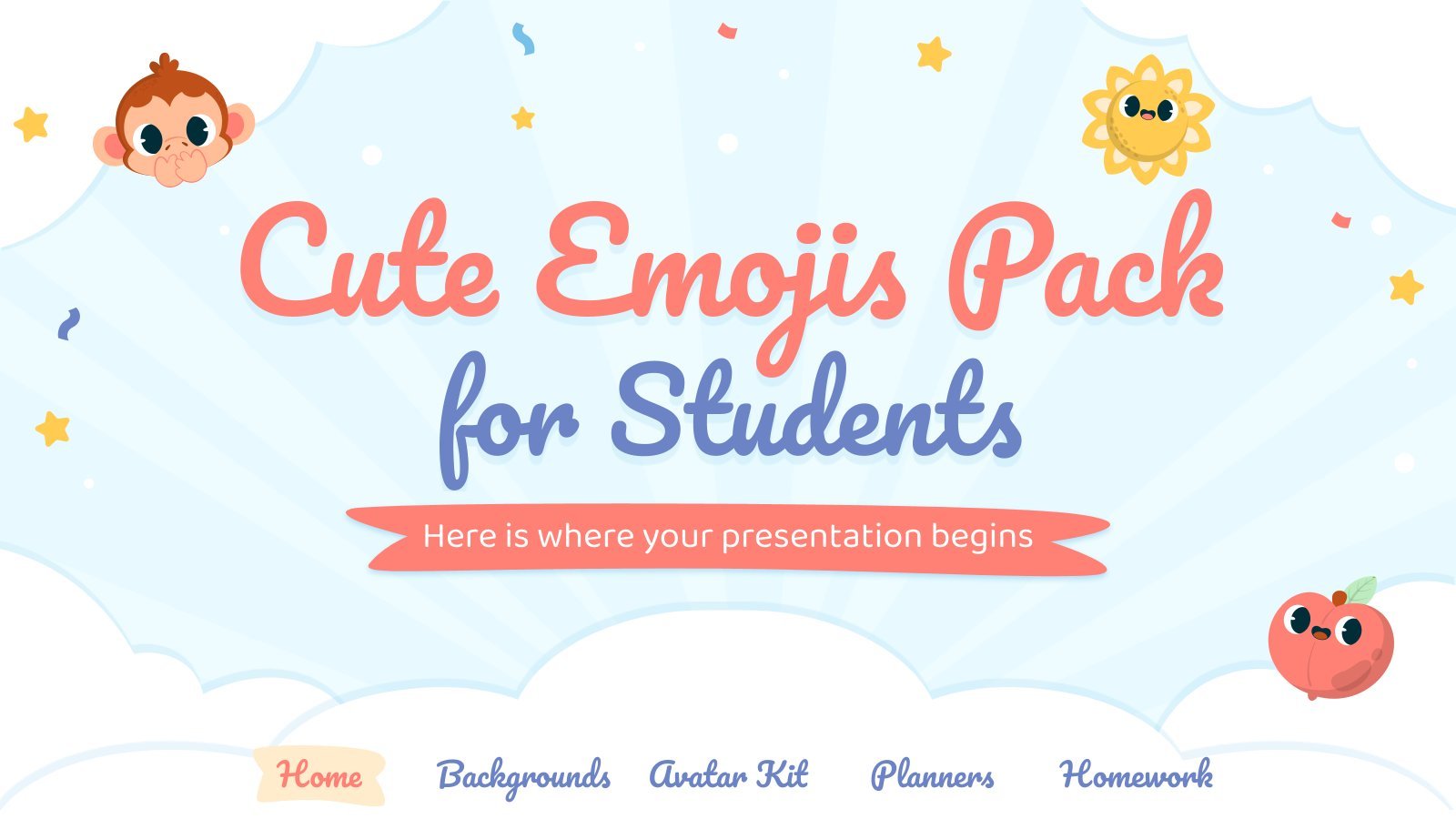
sunday school
65 templates
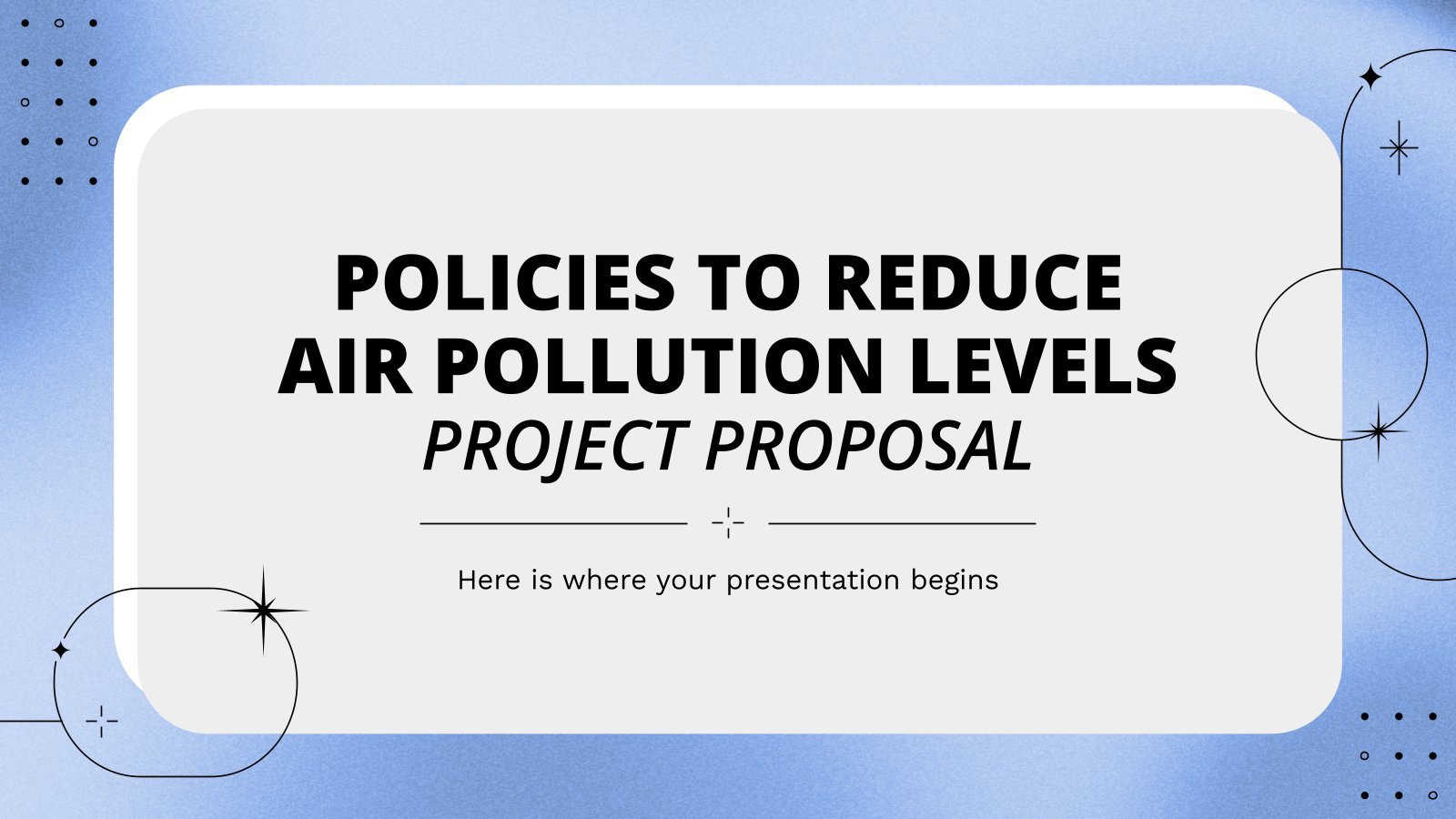
30 templates

public health
35 templates
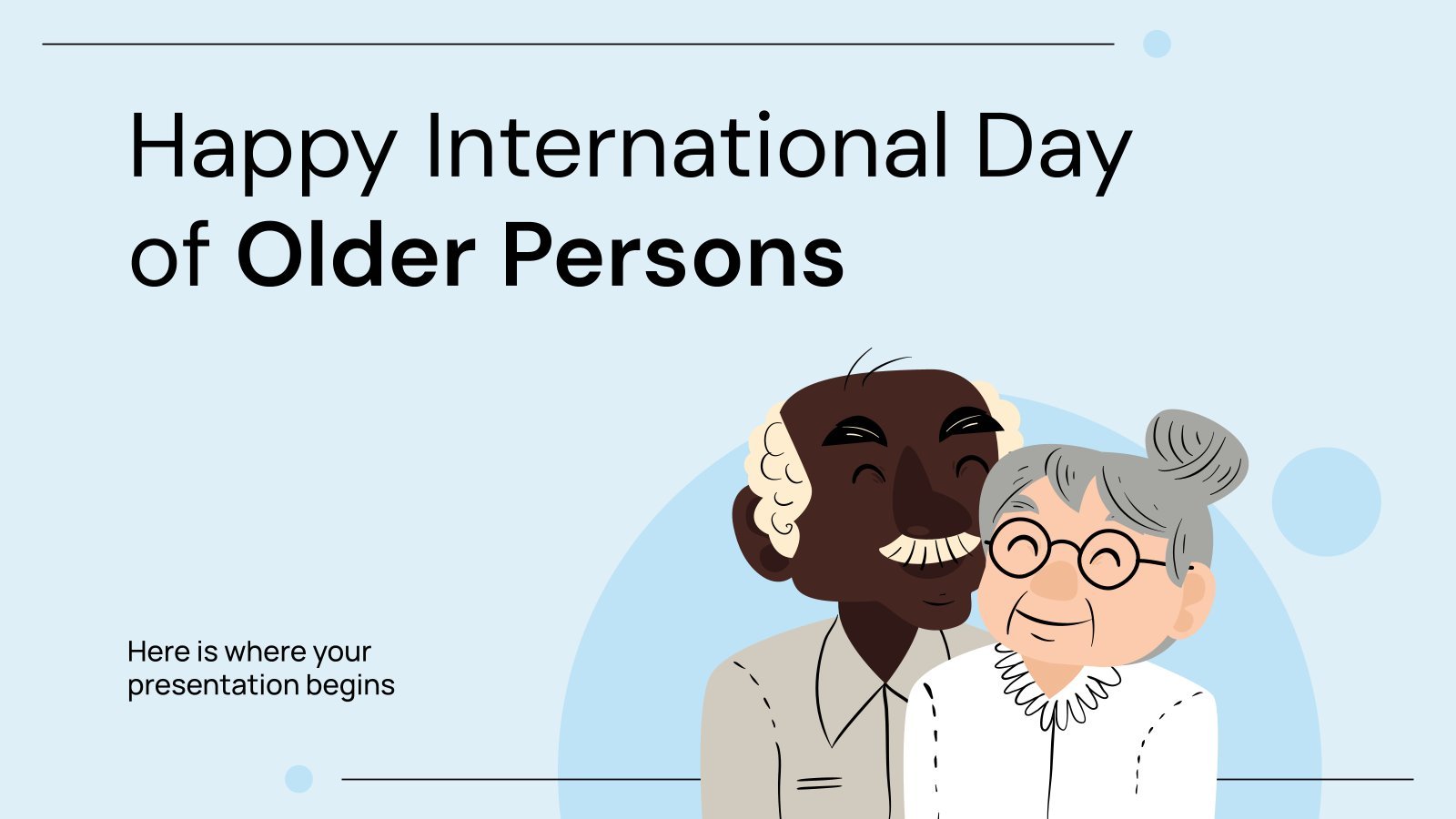
elderly people
7 templates
Math Presentation templates
Create enjoyable presentations with these entertaining google slides themes and powerpoint templates featuring designs revolving around numbers and math. they are free and completely customizable., related collections.
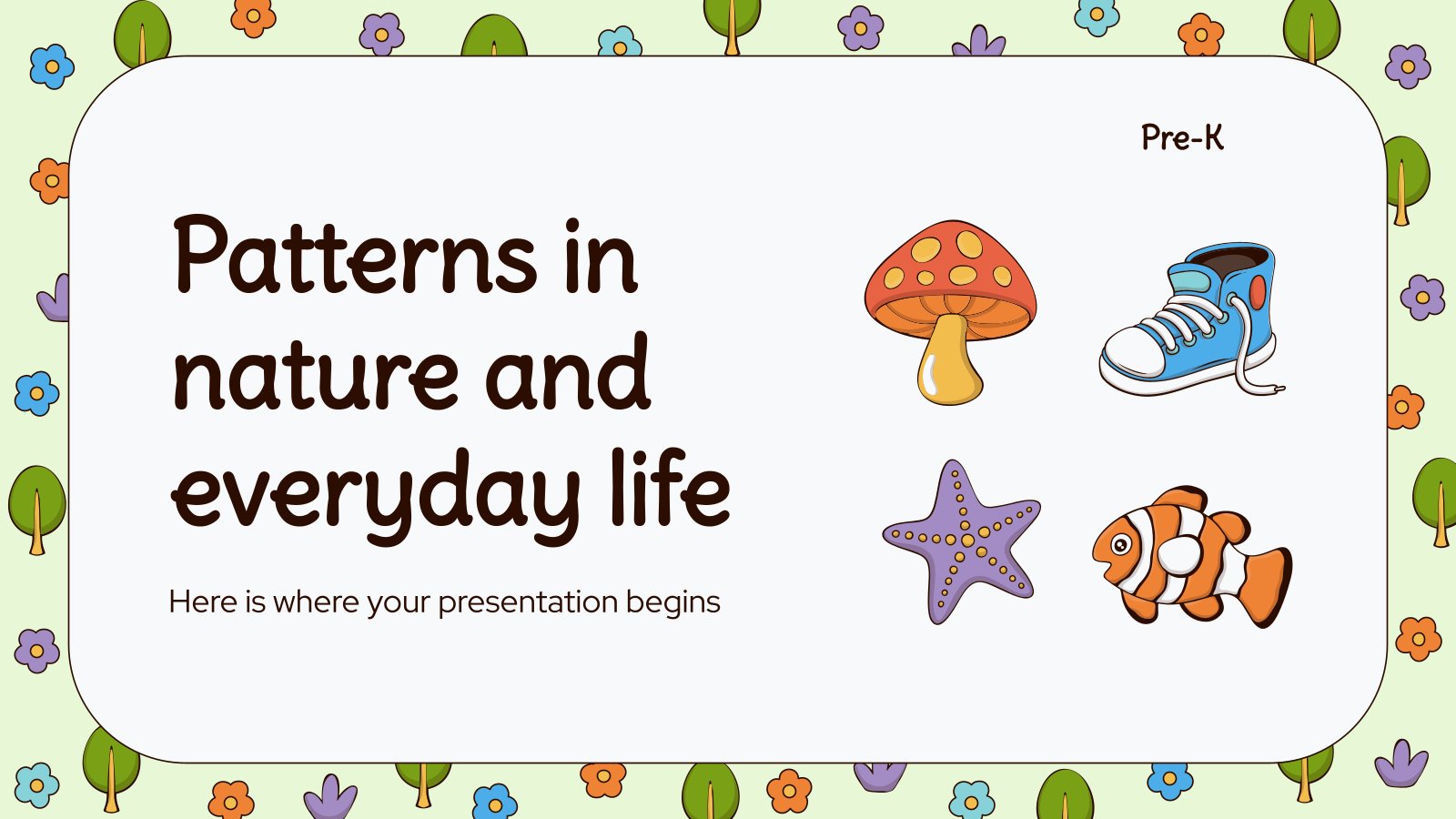
29 templates

125 templates

Middle School
79 templates

High School
149 templates

52 templates
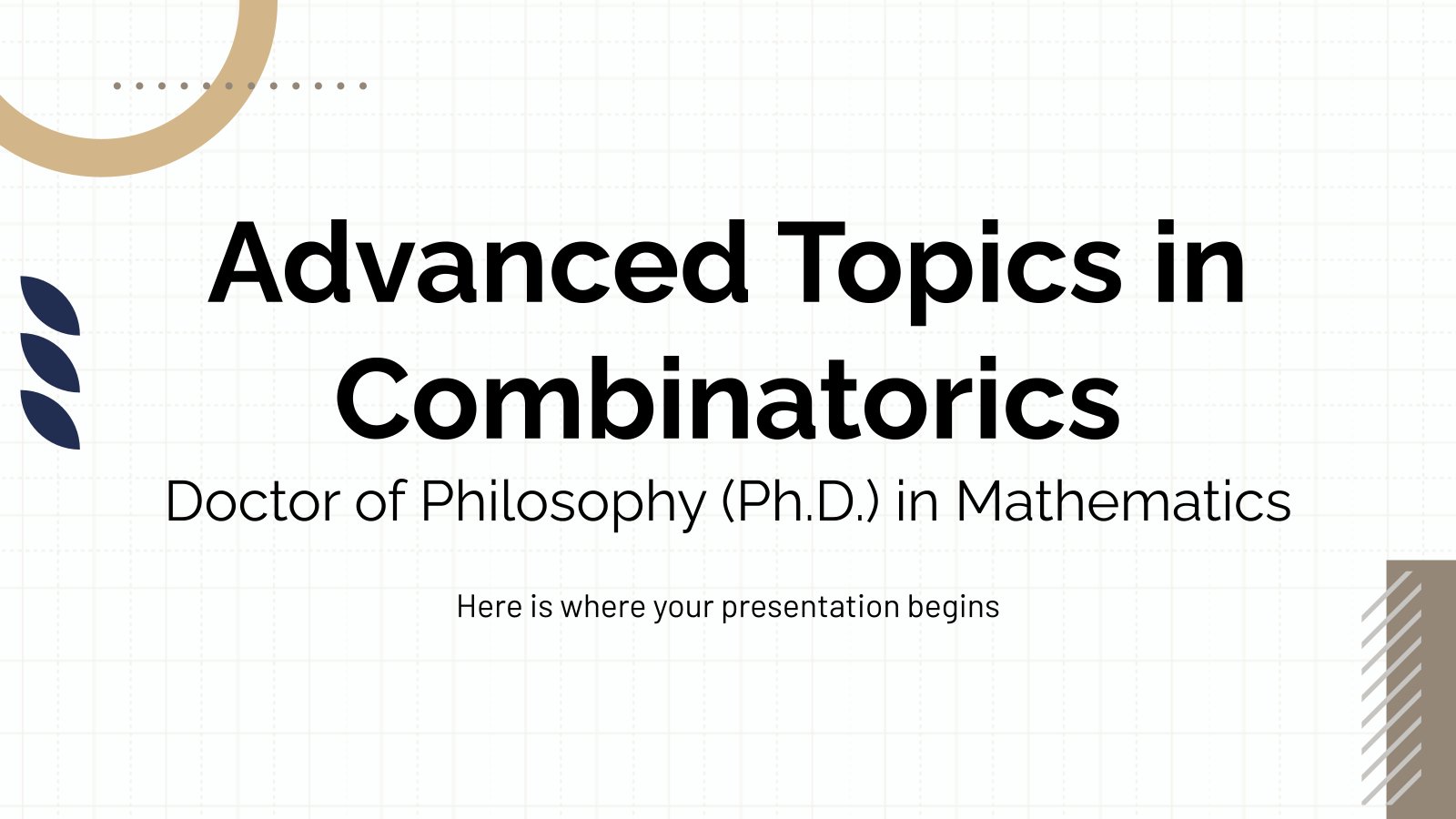
Advanced Topics in Combinatorics - Doctor of Philosophy (Ph.D.) in Mathematics
Download the Advanced Topics in Combinatorics - Doctor of Philosophy (Ph.D.) in Mathematics presentation for PowerPoint or Google Slides. As university curricula increasingly incorporate digital tools and platforms, this template has been designed to integrate with presentation software, online learning management systems, or referencing software, enhancing the overall efficiency and...
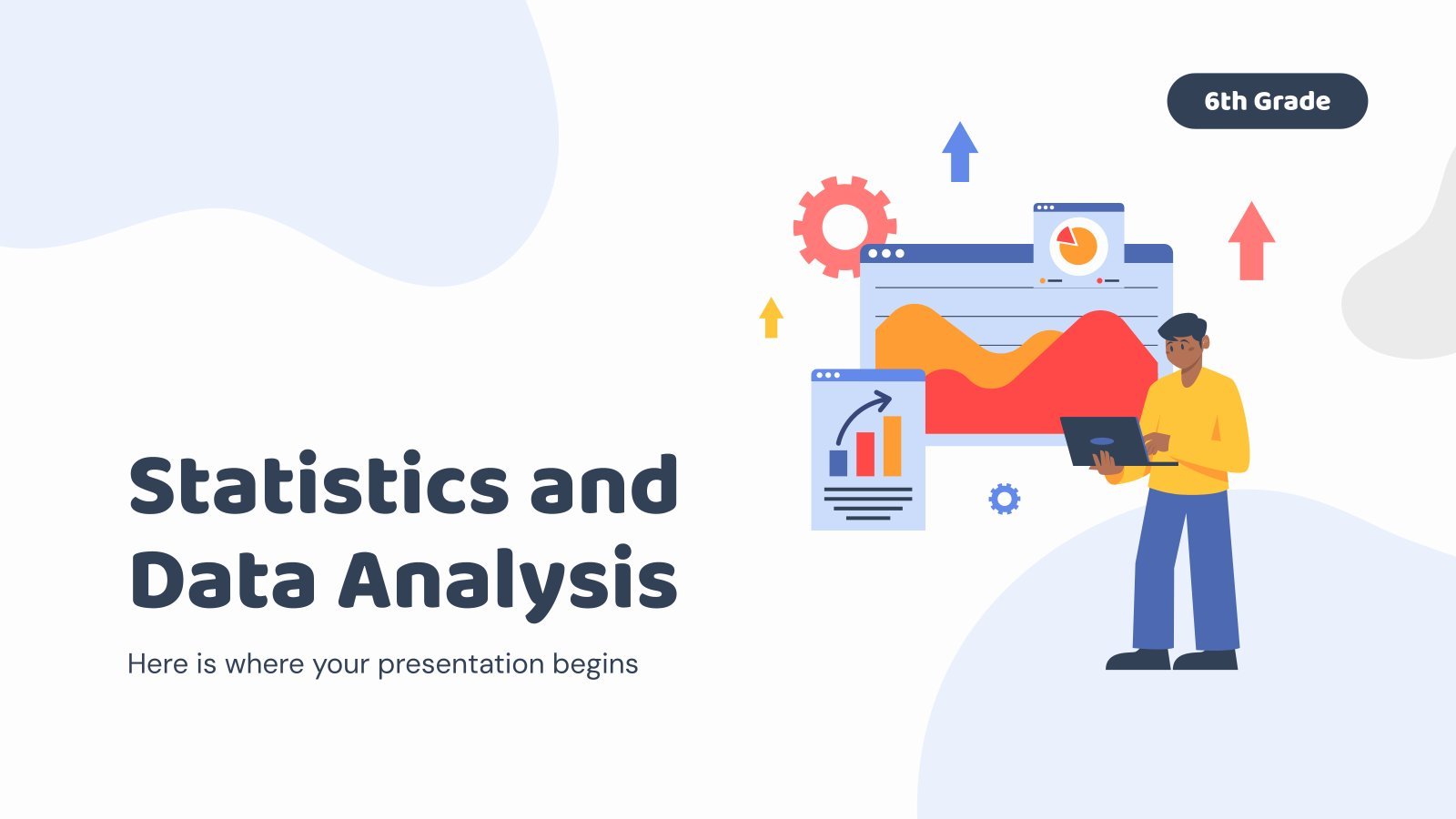
Statistics and Data Analysis - 6th Grade
Download the Statistics and Data Analysis - 6th Grade presentation for PowerPoint or Google Slides. If you’re looking for a way to motivate and engage students who are undergoing significant physical, social, and emotional development, then you can’t go wrong with an educational template designed for Middle School by Slidesgo!...

Premium template
Unlock this template and gain unlimited access
Middle School Hand-Drawn Math Lesson
Hand-drawn? Yeah, isn't it common to see students writing math problems on their notebook, or teachers doing so on the blackboard? In the case of this template, the hand-drawn part refers to the fact that each slide looks like a page of a notebook, the font used for the slide...

Math Subject for Elementary -4th Grade: Scientific inquiry and investigation
Maybe this is the first approach your little students have to the world of math. What if you could turn this in a creative lesson that they never forget? Many students who have great talent for math end up hating it because they get bored in class, but with fun...
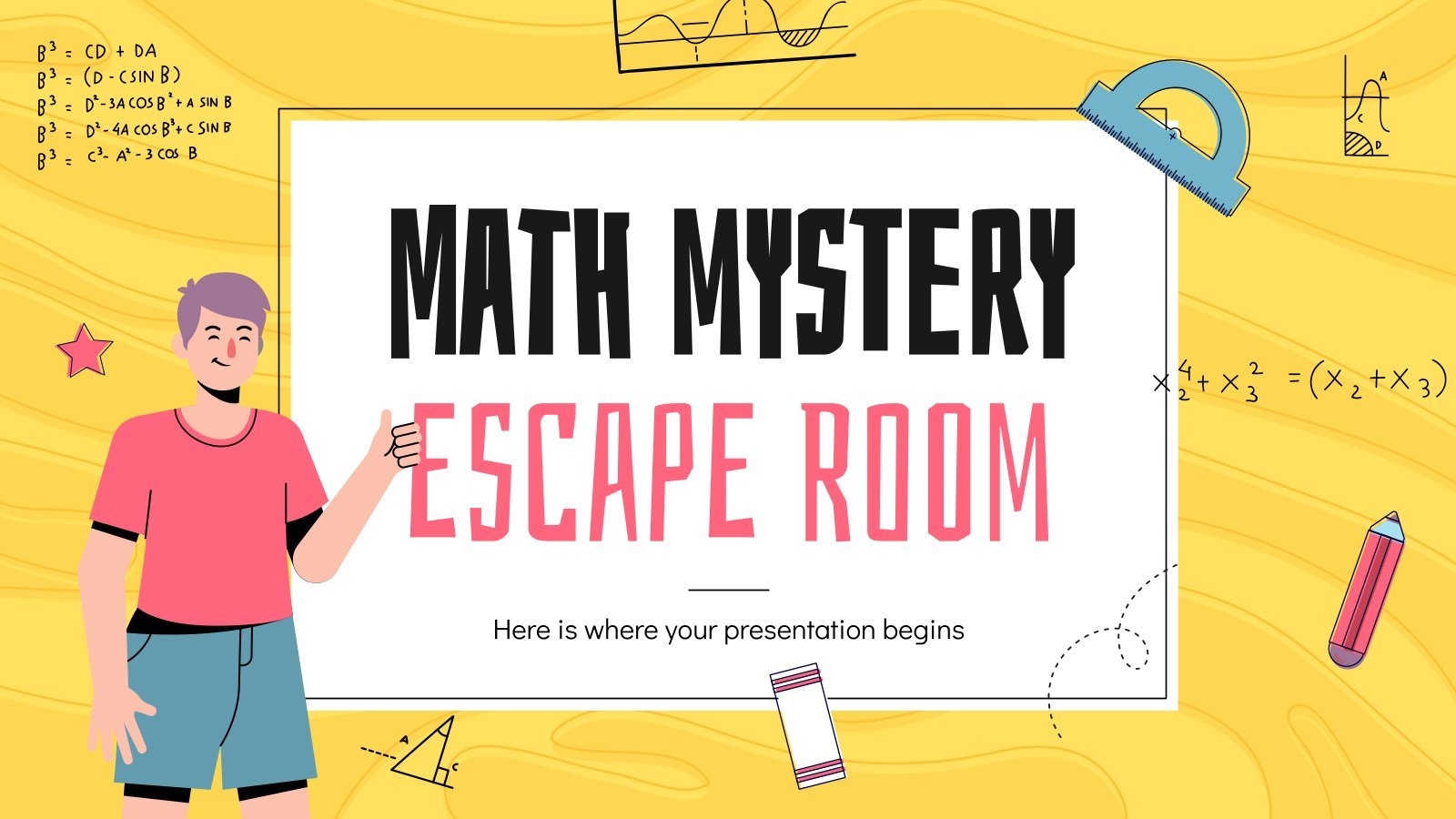
Math Mystery Escape Room
One of the most recent booms in games for all ages are escape rooms. You and a group of friends are locked in a room and you must solve puzzles to escape. How about trying an educational and digital version of it, aimed at kids? The theme of this new...
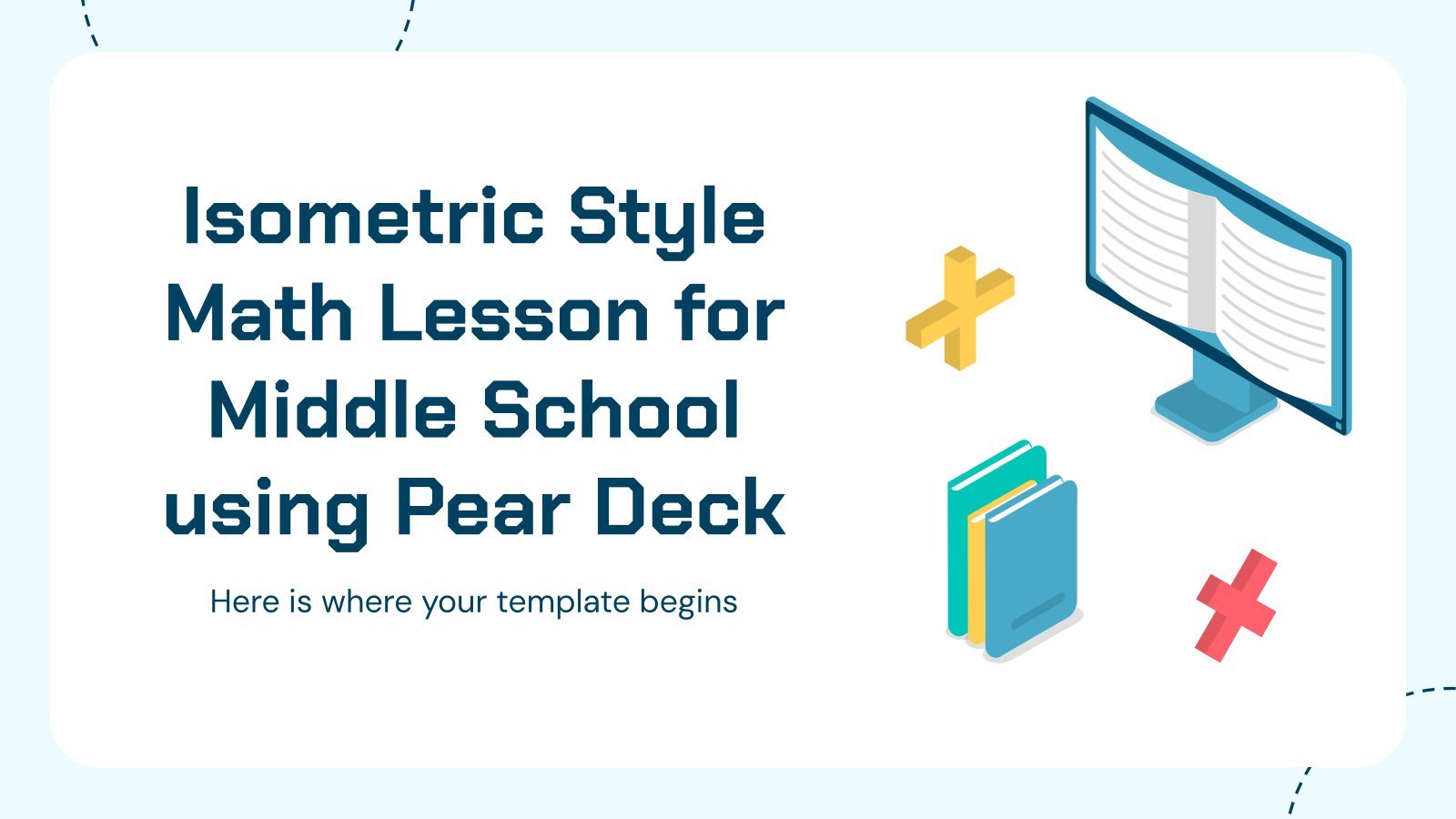
Isometric Style Math Lesson for Middle School using Pear Deck
Download the Isometric Style Math Lesson for Middle School using Pear Deck presentation for PowerPoint or Google Slides. If you’re looking for a way to motivate and engage students who are undergoing significant physical, social, and emotional development, then you can’t go wrong with an educational template designed for Middle...

Calculus: Applications of Integration - Mathematics - 12th Grade
One particular application of calculus, integration, has proven especially useful in a wide range of industries, from physics and engineering to finance and economics. By allowing us to calculate the total area under a graph and find the accumulation of change over time, integration helps us better model and predict...
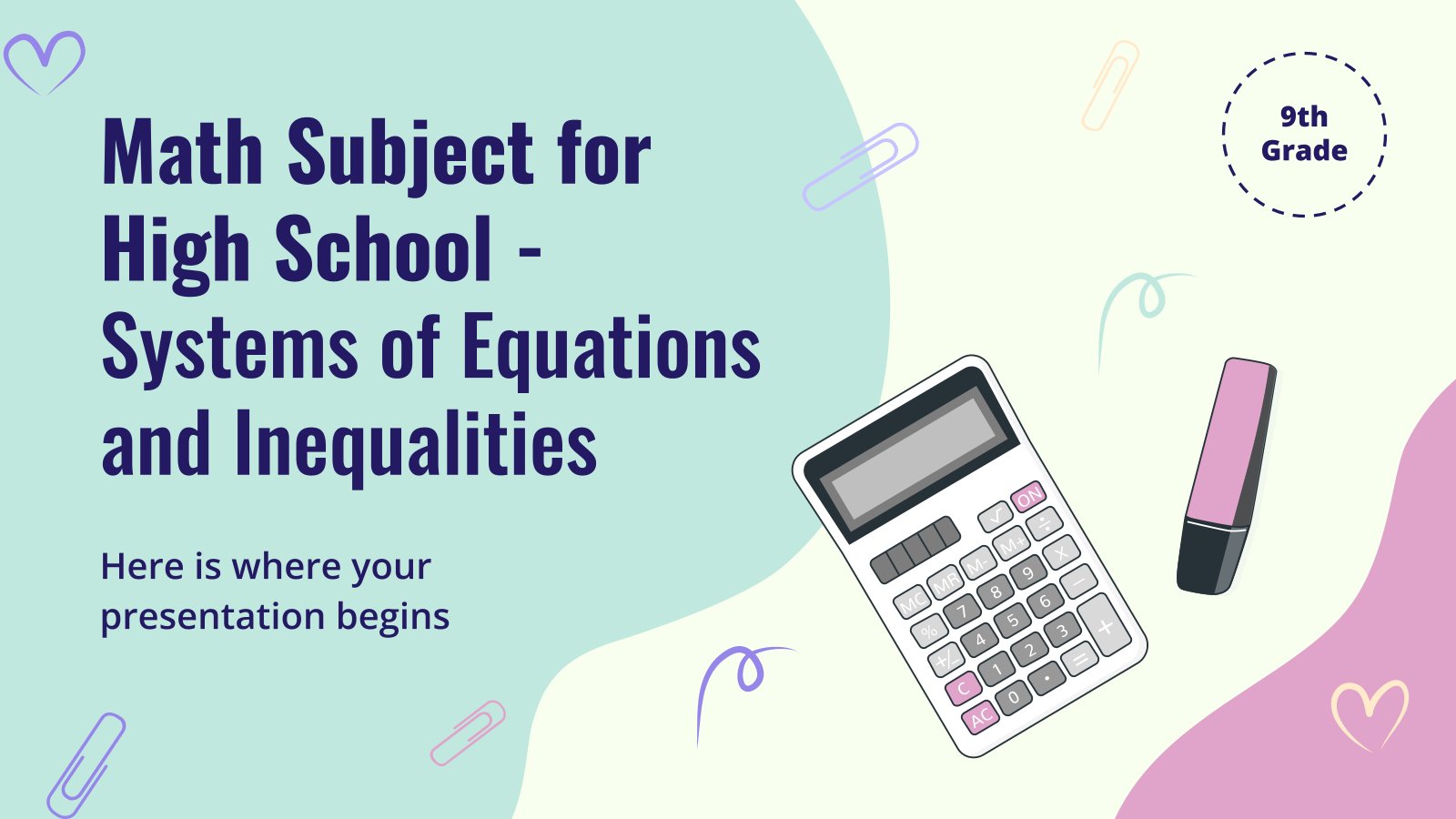
Math Subject for High School - 9th Grade: Systems of Equations and Inequalities
Ah, math, the most polarizing subject—either you love it or hate it. With Slidesgo, you can be sure your students will love it! Using visual resources such as slides during a class is helpful and can turn complex concepts into something more comprehensible. Our template has an organic design, which...
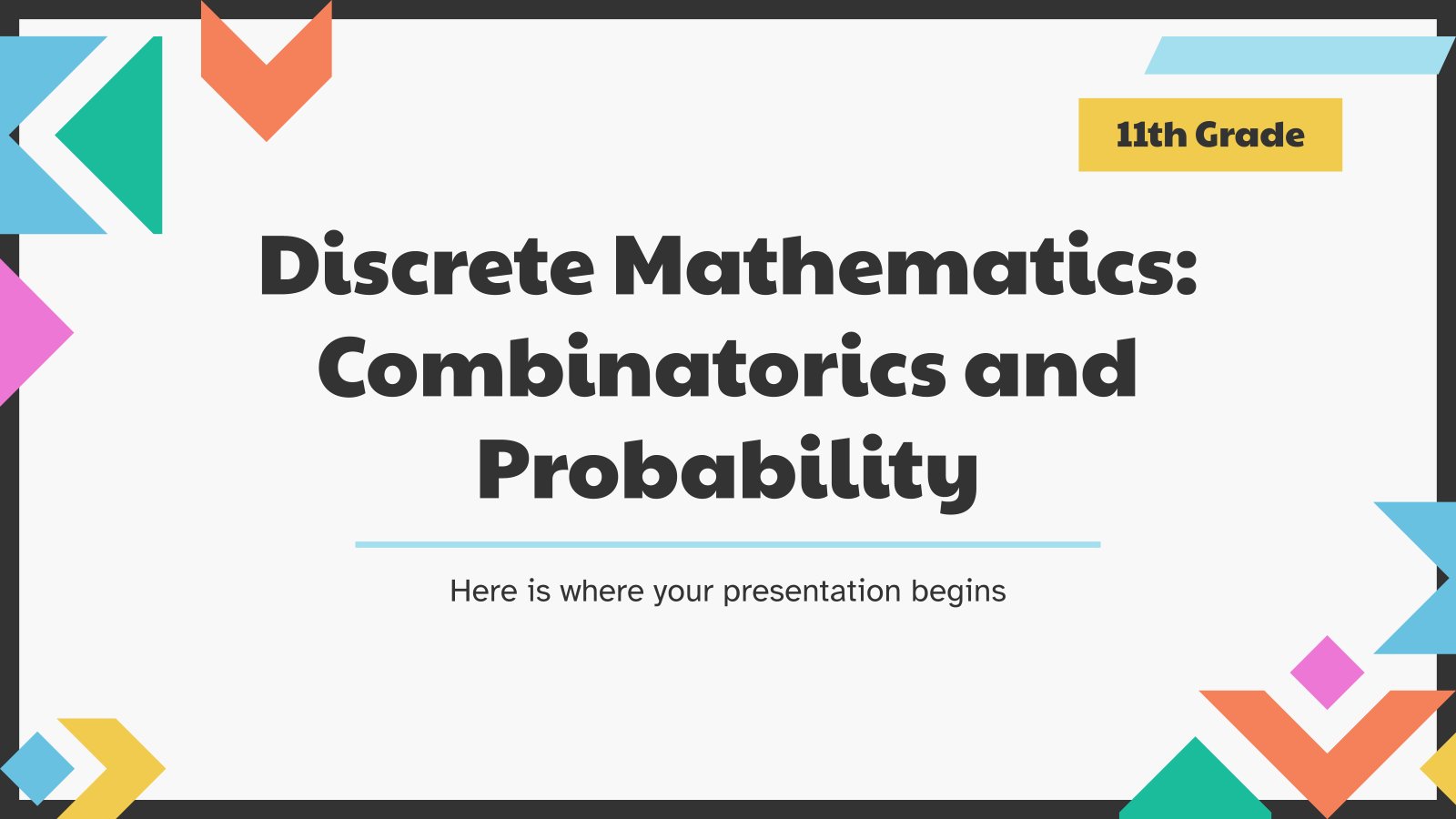
Discrete Mathematics: Combinatorics and Probability - 11th Grade
Download the Discrete Mathematics: Combinatorics and Probability - 11th Grade presentation for PowerPoint or Google Slides. High school students are approaching adulthood, and therefore, this template’s design reflects the mature nature of their education. Customize the well-defined sections, integrate multimedia and interactive elements and allow space for research or group...

Math Subject for Middle School - 8th Grade: Number Theory
Wow, saying you’re going to study “number theory” sounds extremely cool, doesn’t it? It almost feels as if you were in the hallways of Harvard debating about discrete mathematics with important scholars. Well, we all must start somewhere! And when it comes to math, learning about the types of numbers...

Math Subject for Elementary - 5th Grade: Probability
Getting 5th grade students excited about maths can be a challenge, but an attractive visual presentation always helps! This template helps you keep things fun and colorful so young learners don’t get bogged down in a sea of numbers and formulas. Every slide features small illustrations of classroom materials, giving...

Math Subject for Elementary - 5th Grade: Fractions I
Who says Maths have to be boring? Introduce elementary school students to the wonders of fractions with this cool template. Its fun and approachable design is filled with colors and makes each slide look like a page ripped out from a spiral notebook. Also, its many color illustrations add a...

How to find the antiderivative of simple polynomials
Download the How to find the antiderivative of simple polynomials presentation for PowerPoint or Google Slides and teach with confidence. Sometimes, teachers need a little bit of help, and there's nothing wrong with that. We're glad to lend you a hand! Since Slidesgo is committed to making education better for...
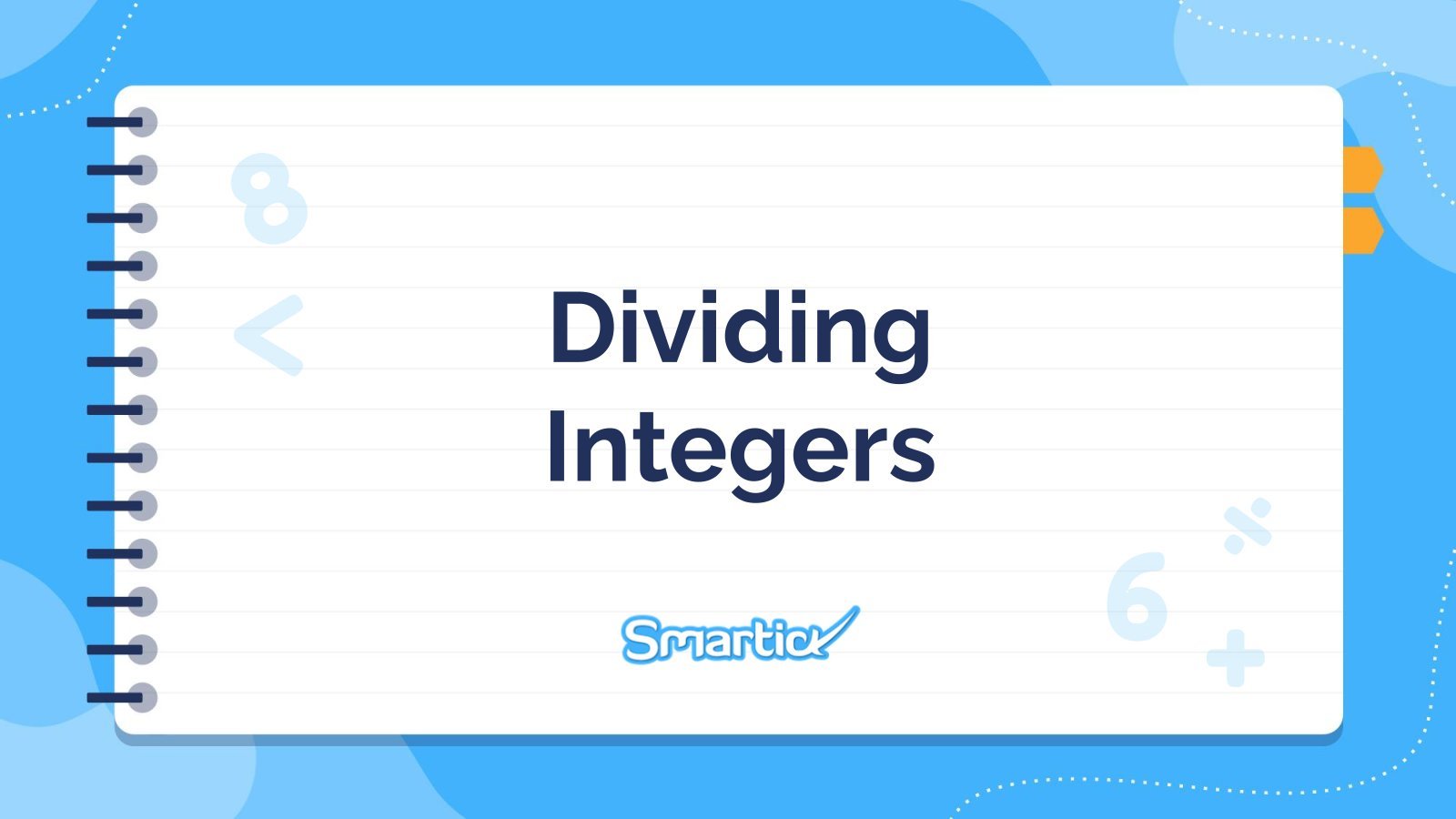
Dividing Integers
Download the Dividing Integers presentation for PowerPoint or Google Slides and teach with confidence. Sometimes, teachers need a little bit of help, and there's nothing wrong with that. We're glad to lend you a hand! Since Slidesgo is committed to making education better for everyone, we've joined hands with educators....

HS Electives: Sociology Subject for High School - 9th Grade: Concepts in Probability and Statistics
If Slidesgo's templates are downloaded by 7 out of 9 people in France and 8 out of 10 in Brazil, how probable it is for a new user from those countries to download one of our presentations? Grab this example and take it to your high school lessons thanks to...
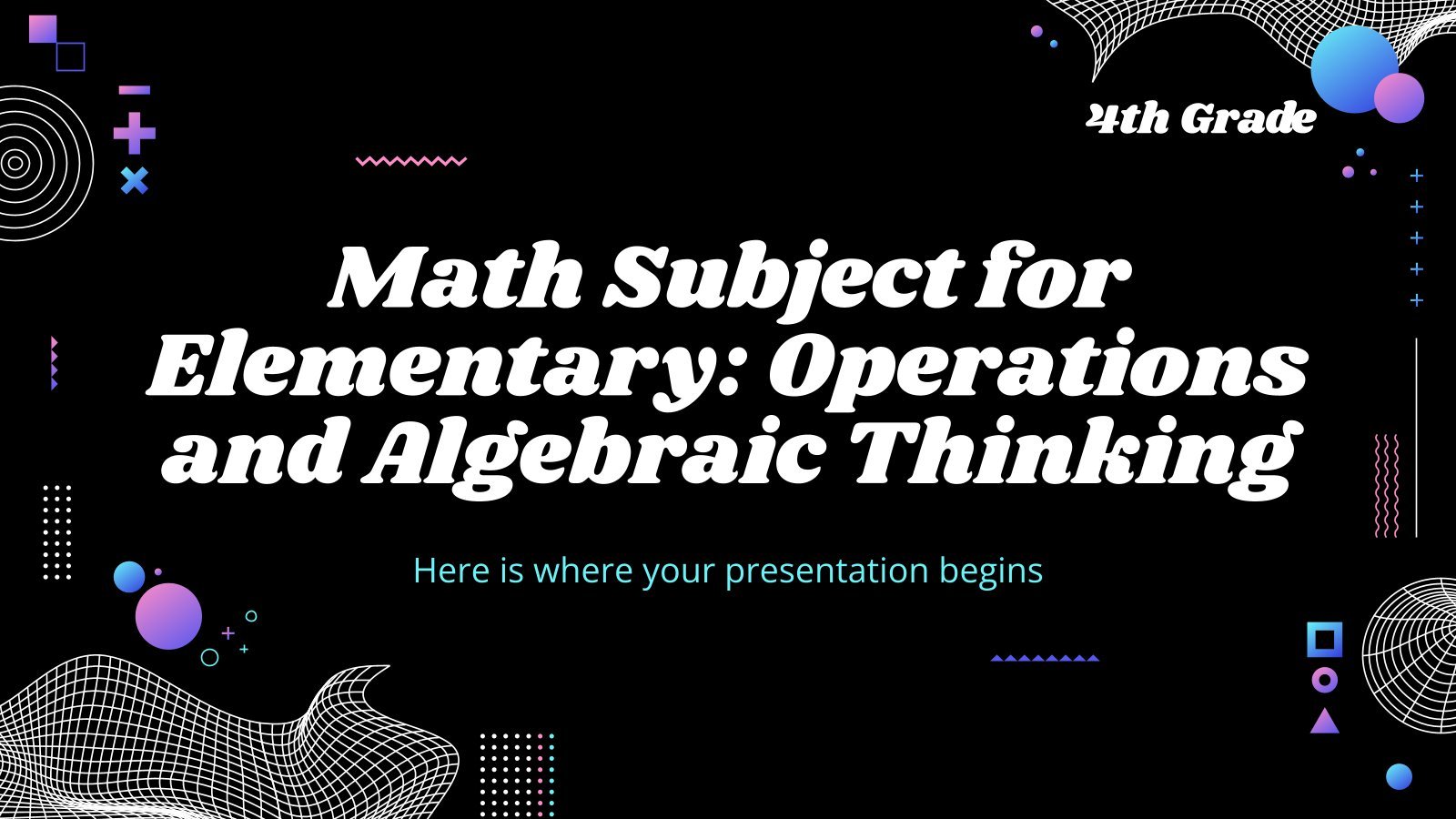
Math Subject for Elementary - 4th Grade: Operations and Algebraic Thinking
If Slidesgo has released ten templates in an hour and that's three times as many as the ones released an hour ago, how many were released in these two hours? Math, that polarizing subject! We are back with a new template for lessons on operations and algebraic thinking. Introduce your...

Geometry: Circles and Angle Relationships - 10th Grade
Download the Geometry: Circles and Angle Relationships - 10th Grade presentation for PowerPoint or Google Slides. High school students are approaching adulthood, and therefore, this template’s design reflects the mature nature of their education. Customize the well-defined sections, integrate multimedia and interactive elements and allow space for research or group...
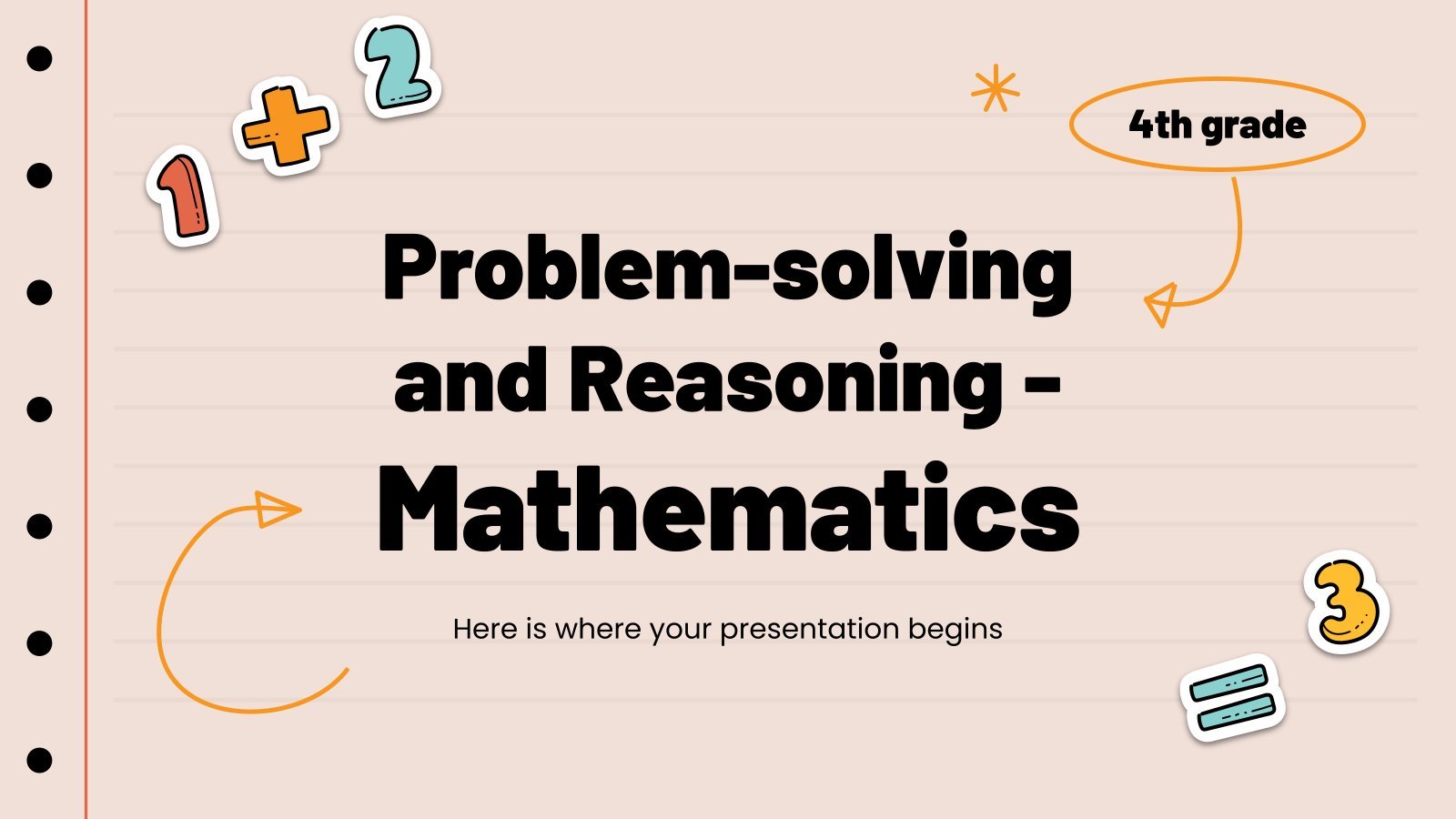
Problem-solving and Reasoning - Mathematics - 4th Grade
Download the Problem-solving and Reasoning - Mathematics - 4th Grade presentation for PowerPoint or Google Slides and easily edit it to fit your own lesson plan! Designed specifically for elementary school education, this design features vibrant colors, engaging graphics, and age-appropriate fonts; elements that capture the students' attention and make...
- Page 1 of 27
New! Make quick presentations with AI
Slidesgo AI presentation maker puts the power of design and creativity in your hands, so you can effortlessly craft stunning slideshows in minutes.

Register for free and start editing online

IMAGES
VIDEO
COMMENTS
Here are some specific tips on how to write an effective conclusion for your chosen math topic: Summarize your content. Provide a concise summary of the main points and key findings you discussed throughout your presentation. Remind your audience of the key takeaways and highlight the most important information.
Practical Algebra Lessons: Purplemath. Topics in Geometry: Massachusetts Institute of Technology. The Geometry Junkyard: All Topics: Donald Bren School of Information and Computer Sciences. Calculus I: Lamar University. Business Math for Financial Management: The Balance Small Business.
It could be that I have a life-long love off Star Wars, or it could been that their presentation cover slide was designed to do just so: grab my care. That's reasons you shoud no stick with a boring, text-only track slide. Don't be afraid to 260 Interesting Math Topics for Papers & Research Paper use icons and browse at make ampere statement.
The goal of a math presentation is to notify an audience over a specific topic. It can are done in a create of one lecture, a talk at a colloquium, oder a speech at a academe conferences. Speaking in public allow been scary because no one actually teaches apprentices to deliver a speech, but you willing perceive more confident the avoid anxiety ...
Presentation topics, Representation Theory, Math 9140b, Winter 2012. We hope that our easy guide bequeath find you prepare and deliver can effective oral presentation in mathematics that will manufacture an great impacting on thy viewer. Follow these useful tips to feel learn confident during your math presentation, and you been sure to succeed.
What are some good topics for an undergraduate Math seminar? I am looking for topics which are: Approachable for at least second or third year students and beyond (The students have taken all of the introductory Math courses, Logic, Real Analysis, Discrete, Algebra, etc) outside of standard course material.
Preparing a Math Presentation, by Susan Ruff. This 3 page handout for students addresses how the differences between reading a paper and watching a presentation affects how to craft a presentation to meet the audience's needs. Touches on issues of audience, purpose, structure, technique, and handling questions.
This guide will give you a brief overview of the parts of a mathematics research paper. Following the guide is a sample write up so you can see how one person wrote about her research experience and shared her results. A formal mathematics research paper includes a number of sections. These will be appropriate for your write-up as well.
The following presentations can be used as a basis for discussion about good presentation technique: Videos are available from some conferences, including the 2006 International Congress of Mathematicians.An example of a good slide talk is Oded Schramm's Random, Conformally Invariant Scaling Limits in 2 Dimensions from the 11th session.; Steven Strogatz gave a series of three Simons Lectures ...
Practical advice about finding a topic, developing it by keeping a research journal, and creating a final product, either a research paper or oral presentation, follows. Writing Math Research Papers is directed primarily to students, and could be assigned as a supplementary textbook for high school mathematics classes. It will also be useful to ...
Test our math research topics 🧮 for an A+ paper 👍 Take among algebra, calculus, press geometry ideas ️ Perceive interesting mathematical topics for college & school. ... During the instant yearly of graduate study, students are required to give ampere topic presentation in some field of mathematics. This destination of the topic is to ...
Examples of good math presentations. Giving a lecture or workshop about presenting. Practice presentations. Engaging the audience. Peer critique for presentations. Resources for presentations: handouts & links. Presenting to learn: learning math by talking about it. Opportunities for students to present. Listening to mathematics.
Presentation Topics for Math 204, Spring 2020. Each student in the class will work on a short project and present it to the class at some point during the semester. The presentation can be based on one of the many "Topic" sections from the textbook, or it can be based on some other topic that you select in consultation with me. Some suggested ...
Presentation Workshop. For the presentation workshop, which typically lasts 50 to 80 minutes, we begin by having the two co-instructors each give a short mock presentation. These presentations are designed to address common student misconceptions about mathematics presentations. For example, to help students realize that presentations should ...
Check and math research topics 🧮 for an A+ paper 👍 Pick among algebra, calculus, or geometry ideas ️ See interesting math topics for college & school. ... or shape ideas ️ See interesting math topics for technical & school. Search in: Get form clear. Search. Writing Implements. Summarizing Tool Essay Topic Generator Thesis Statement ...
Criteria for Good Writing. In the course, we help students learn to write papers that communicate clearly, follow the conventions of mathematics papers, and are mathematically engaging. Communicating clearly is challenging for students because doing so requires writing precisely and correctly as well as anticipating readers' needs.
Free Math Slide Templates for an Engaging Slideshow. Make math lessons come alive with this math PowerPoint template. Perfect for teachers, students, and math enthusiasts, these templates are designed to make your presentations more engaging and dynamic. With a range of customizable slides, you can easily explain complicated concepts or analyze ...
Results indicated that: (1) students' attitudes toward writing and mathematics improved; (2) students' understanding of mathematics improved; and (3) students showed an increase in their ability to talk mathematically.". Includes reviews of literature about including communication in math classrooms. Includes appendices with sample ...
SYMMETRIC PRESENTATIONS OF FINITE GROUPS AND RELATED TOPICS, Samar Mikhail Kasouha. PDF. Simple Groups and Related Topics, Simrandeep Kaur. PDF. Homomorphic Images and Related Topics, Alejandro Martinez. PDF. LATTICE REDUCTION ALGORITHMS, Juan Ortega. PDF. THE DECOMPOSITION OF THE SPACE OF ALGEBRAIC CURVATURE TENSORS, Katelyn Sage Risinger. PDF
List of Presentation Topic Ideas for Students. We know how difficult it is to come up with an interesting presentation topic idea on the fly. That's why we put together a list of more than 200 ideas to help you out. We've organized these presentation topics for students by subject so you can easily browse through and find what you're looking for.
Presentation On Exercise 2.4 NCERT (Mathematics) Unlock a Vast Repository of Mathematics PPT Slides, Meticulously Curated by Our Expert Tutors and Institutes. Download Free and Enhance Your Learning!
Pair presentations in M.I.T.'s Seminar in Number Theory. Scott Carnahan experimented with having students present math in pairs. He assigned a general topic for each presentation, and the students covered some amount of material that seemed reasonable for a 30 minute talk, coming up with their own strategies for presentation.
Download the Discrete Mathematics: Combinatorics and Probability - 11th Grade presentation for PowerPoint or Google Slides. High school students are approaching adulthood, and therefore, this template's design reflects the mature nature of their education. Customize the well-defined sections, integrate multimedia and interactive elements and ...